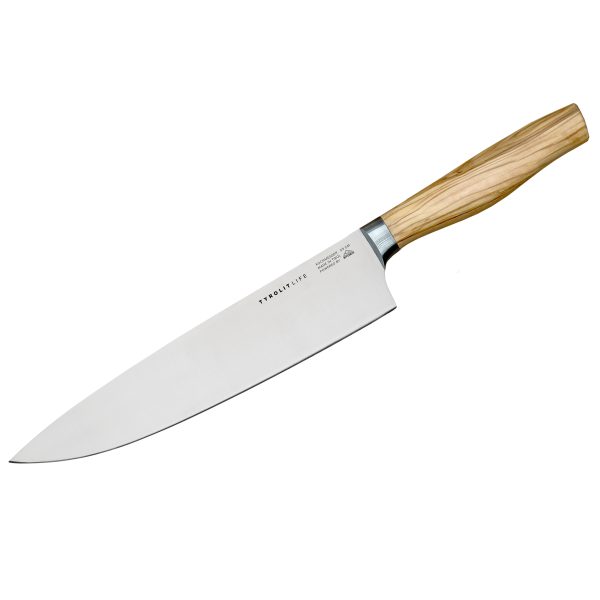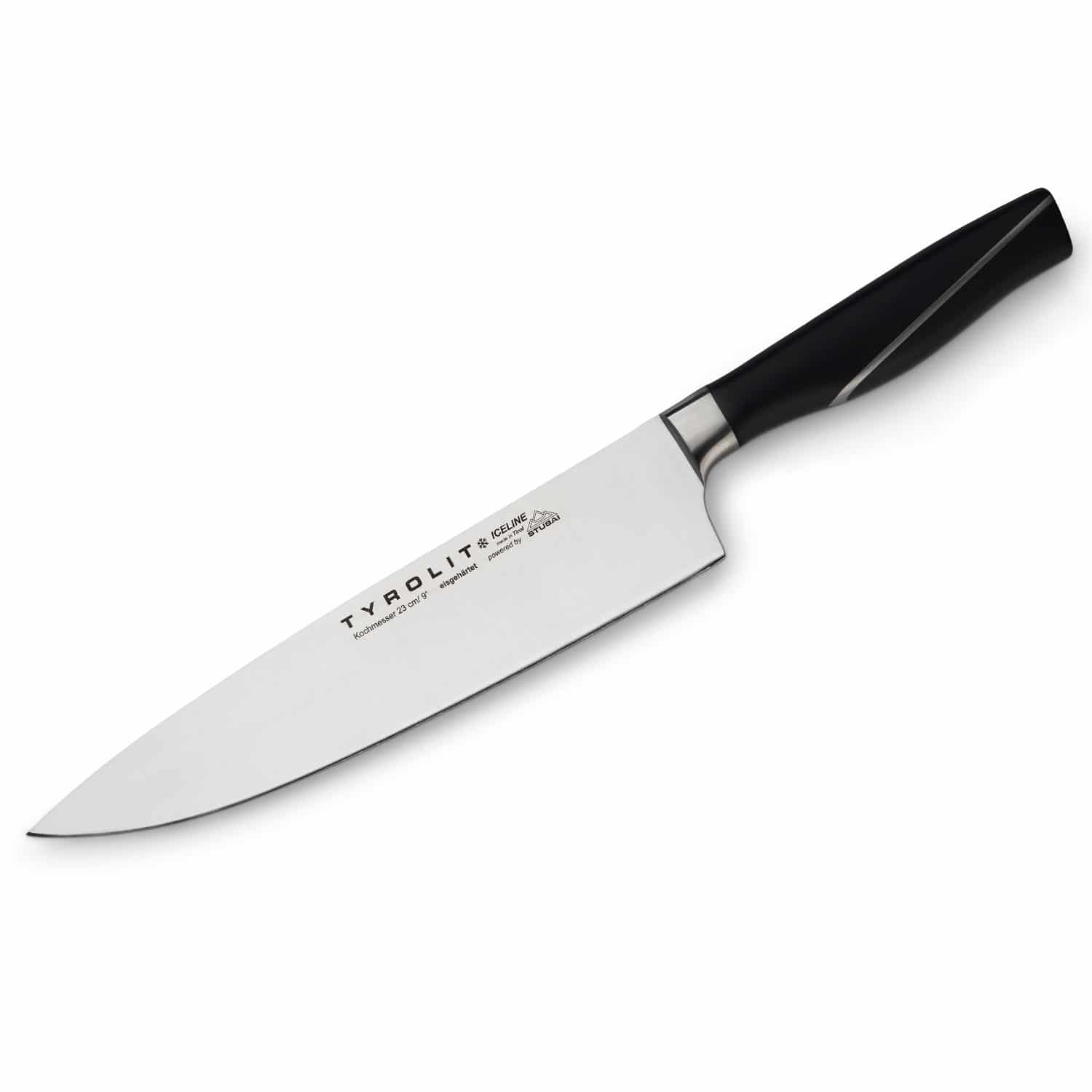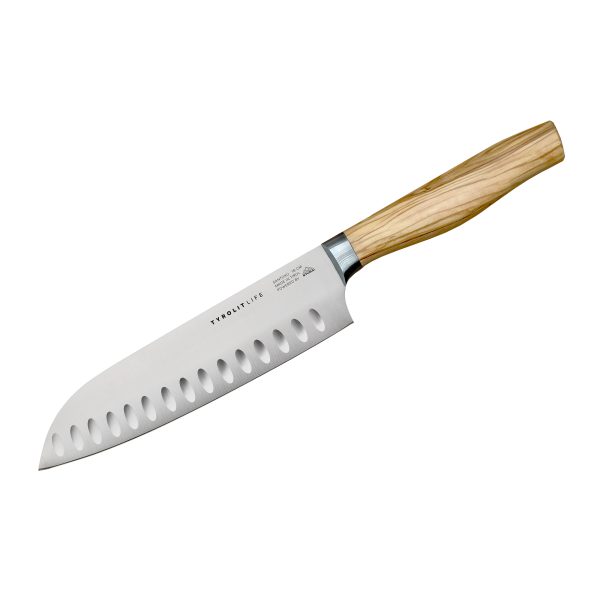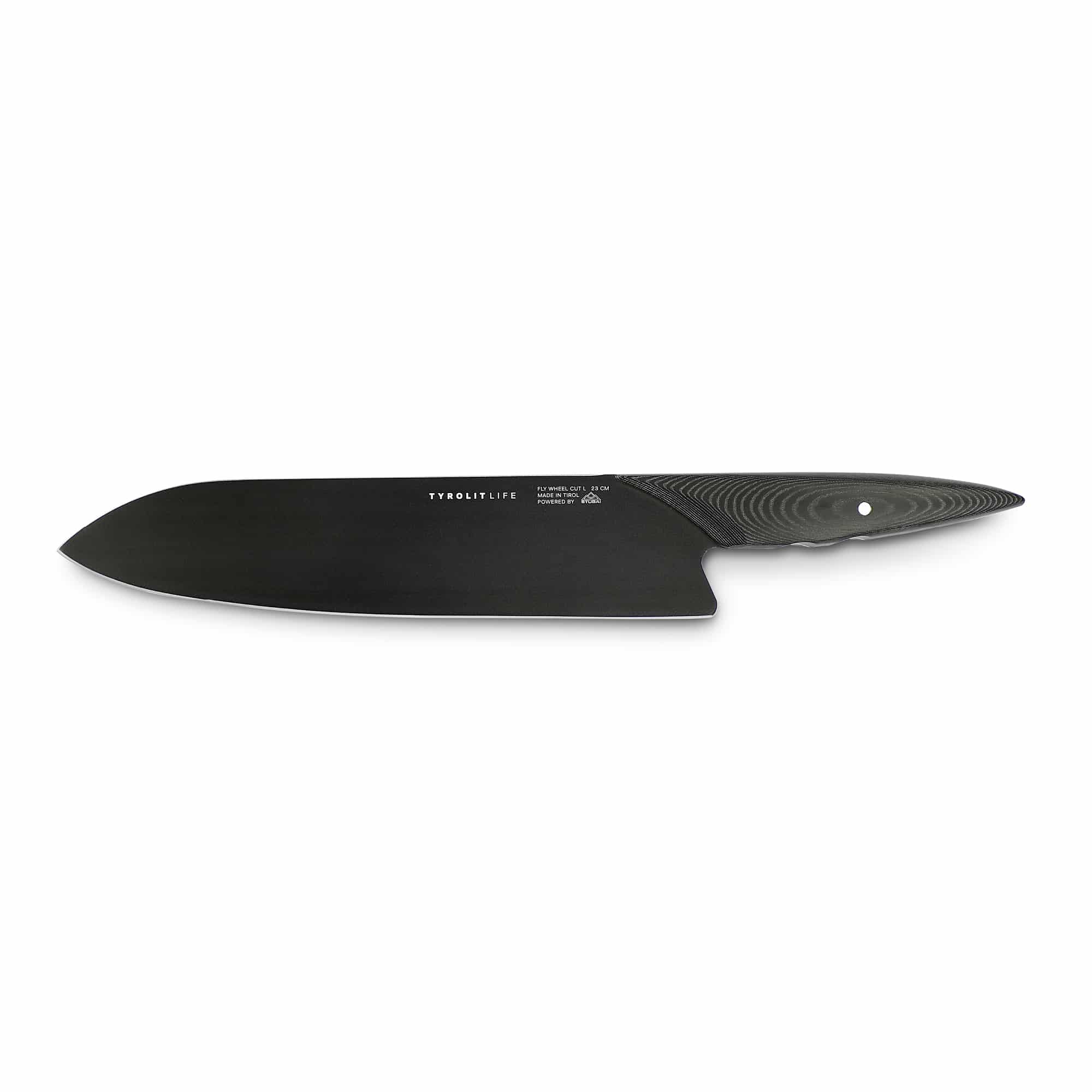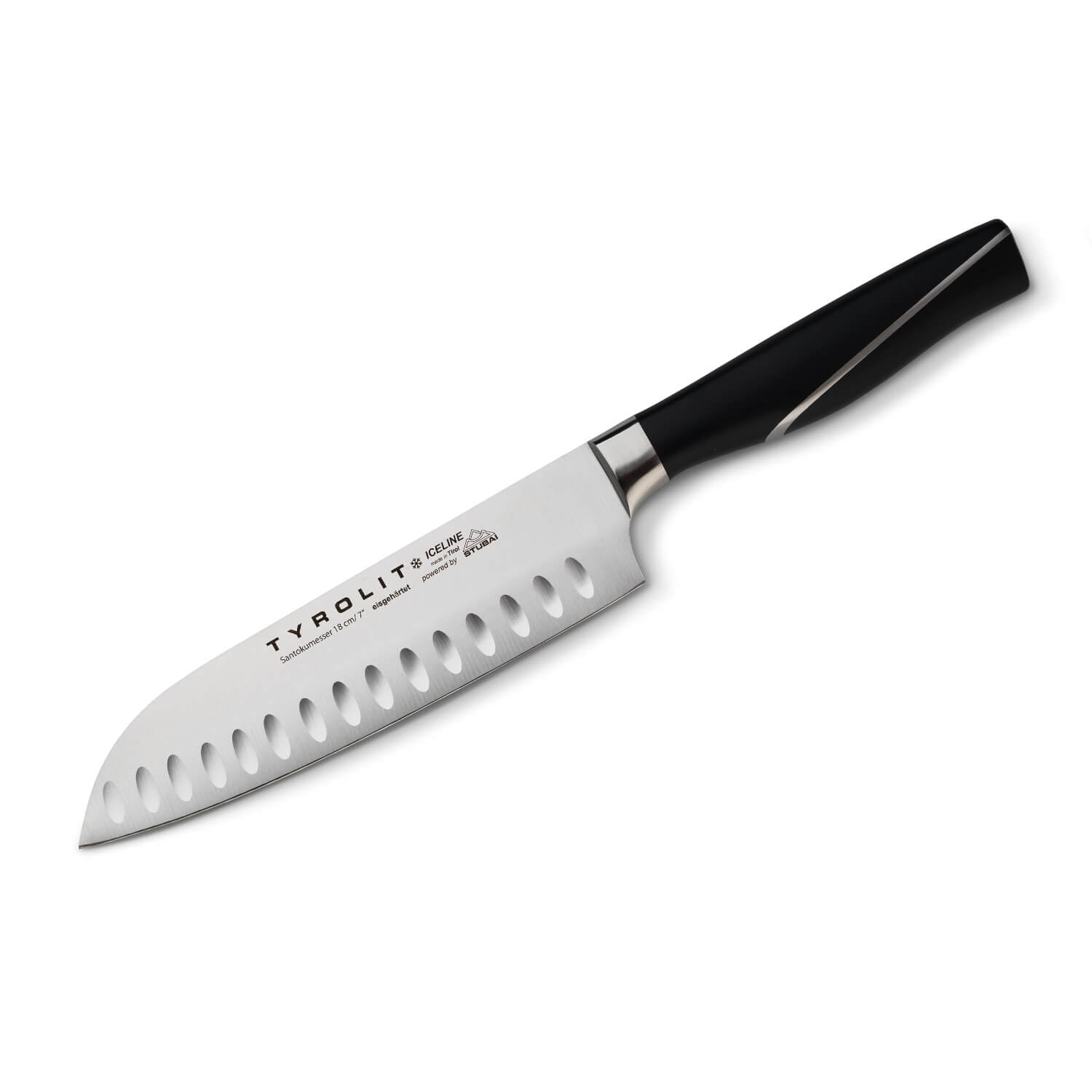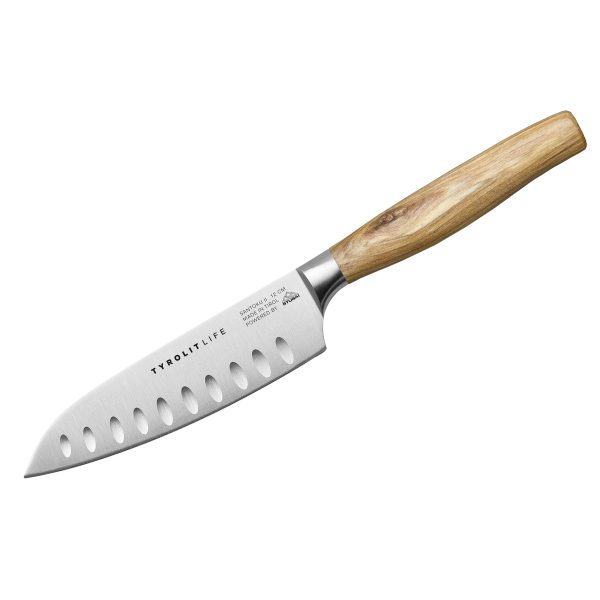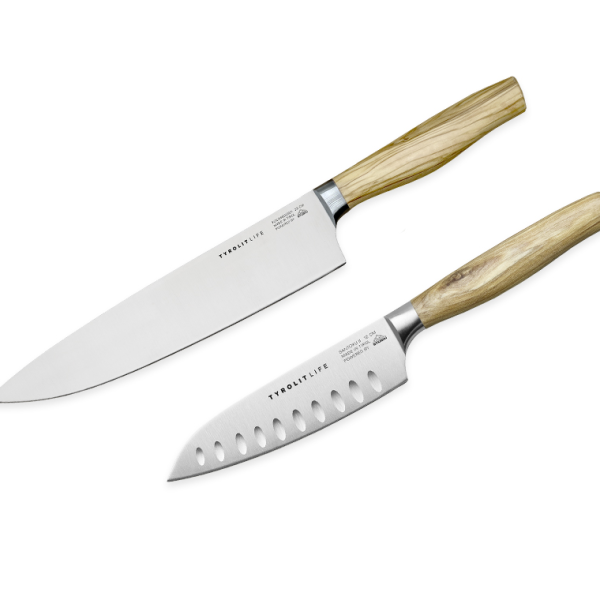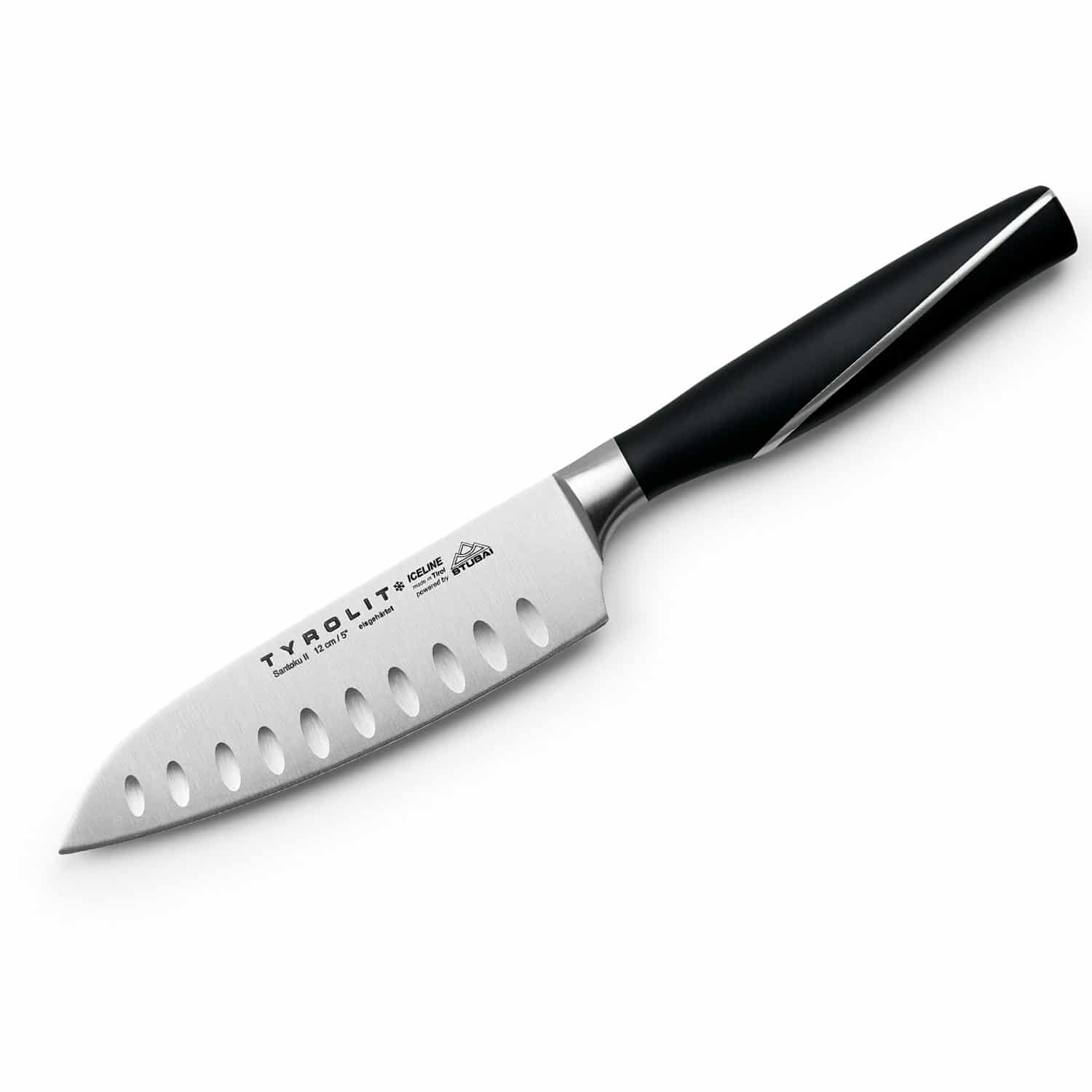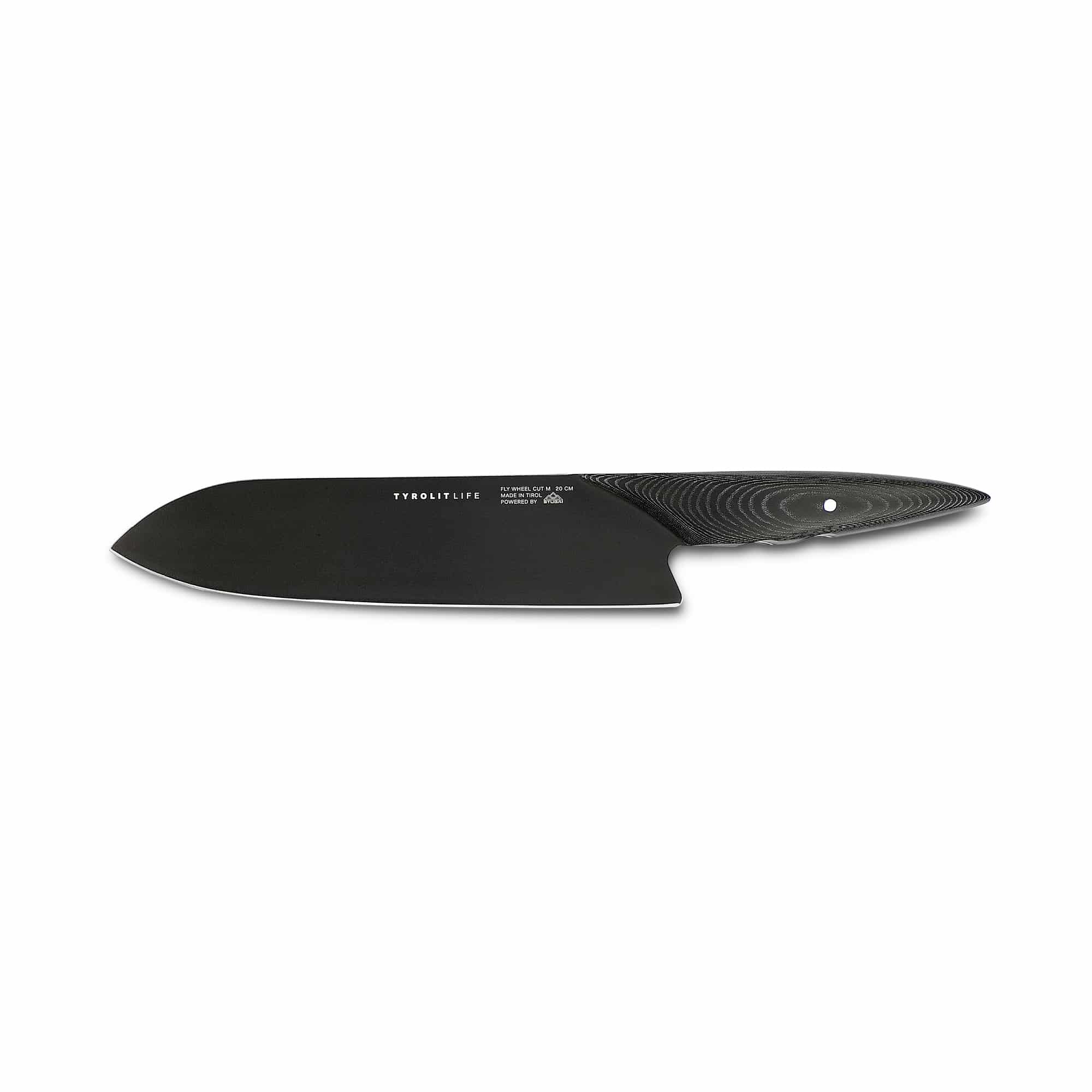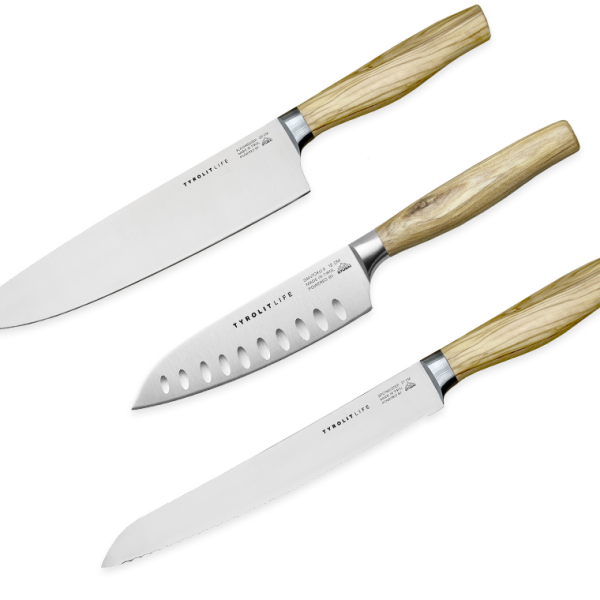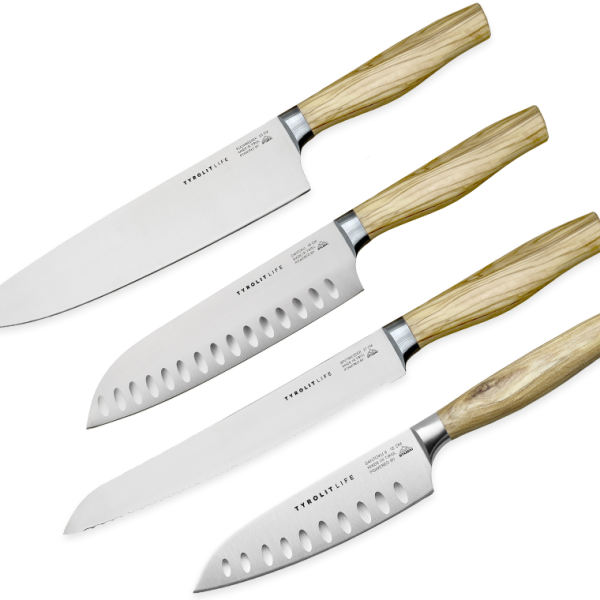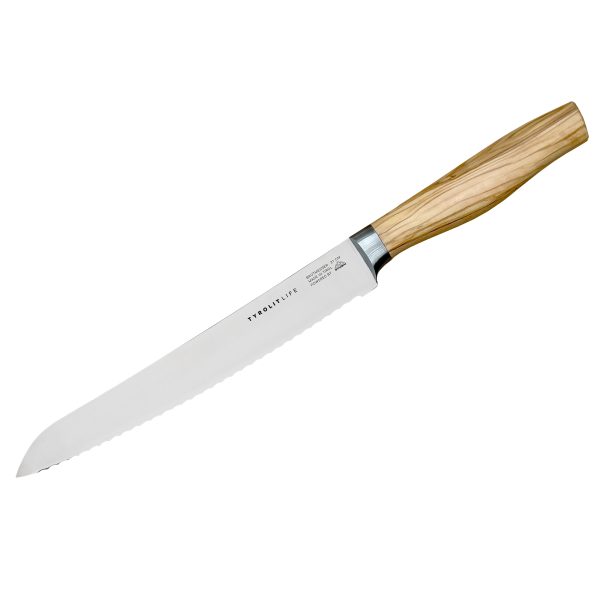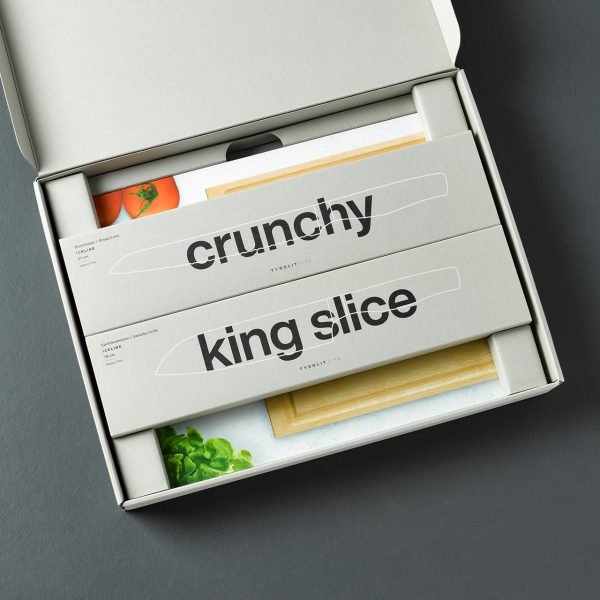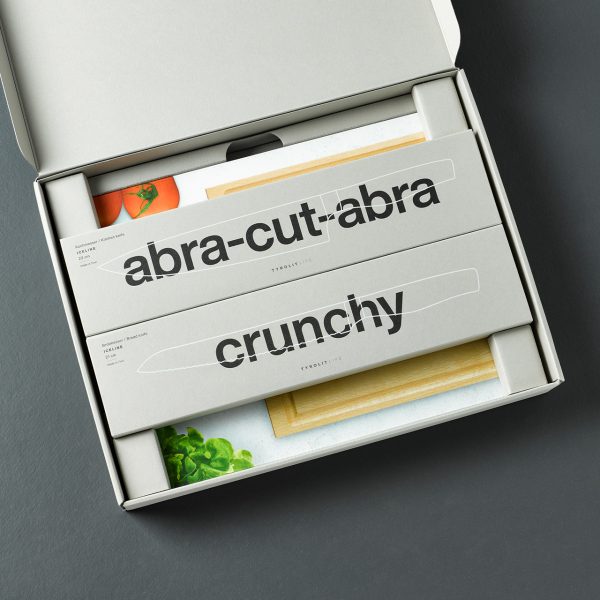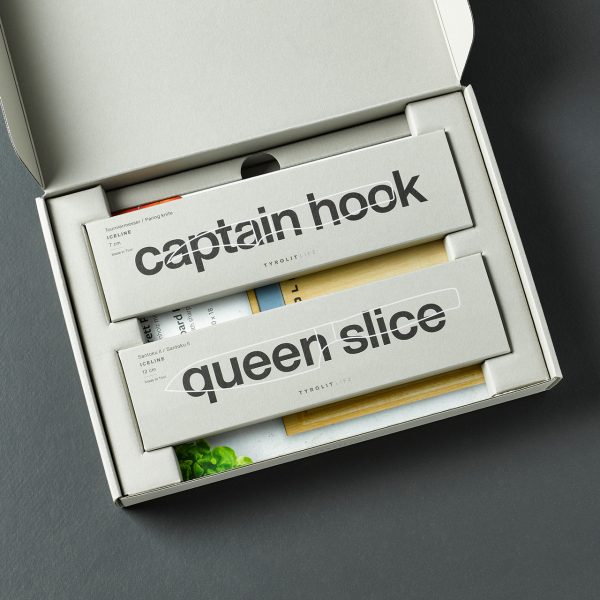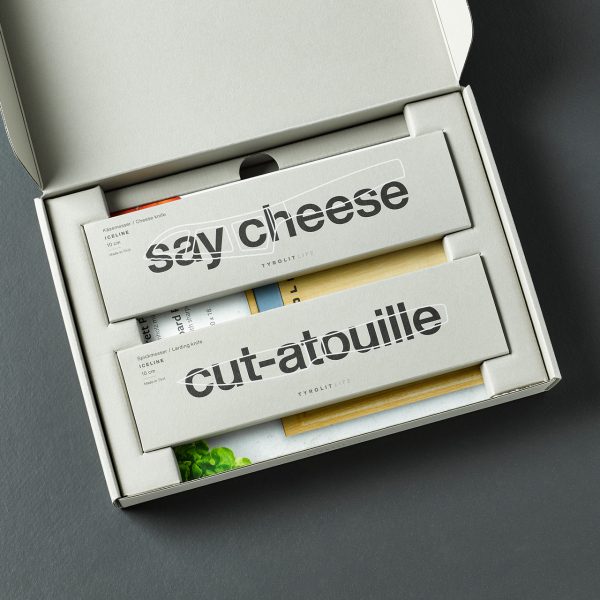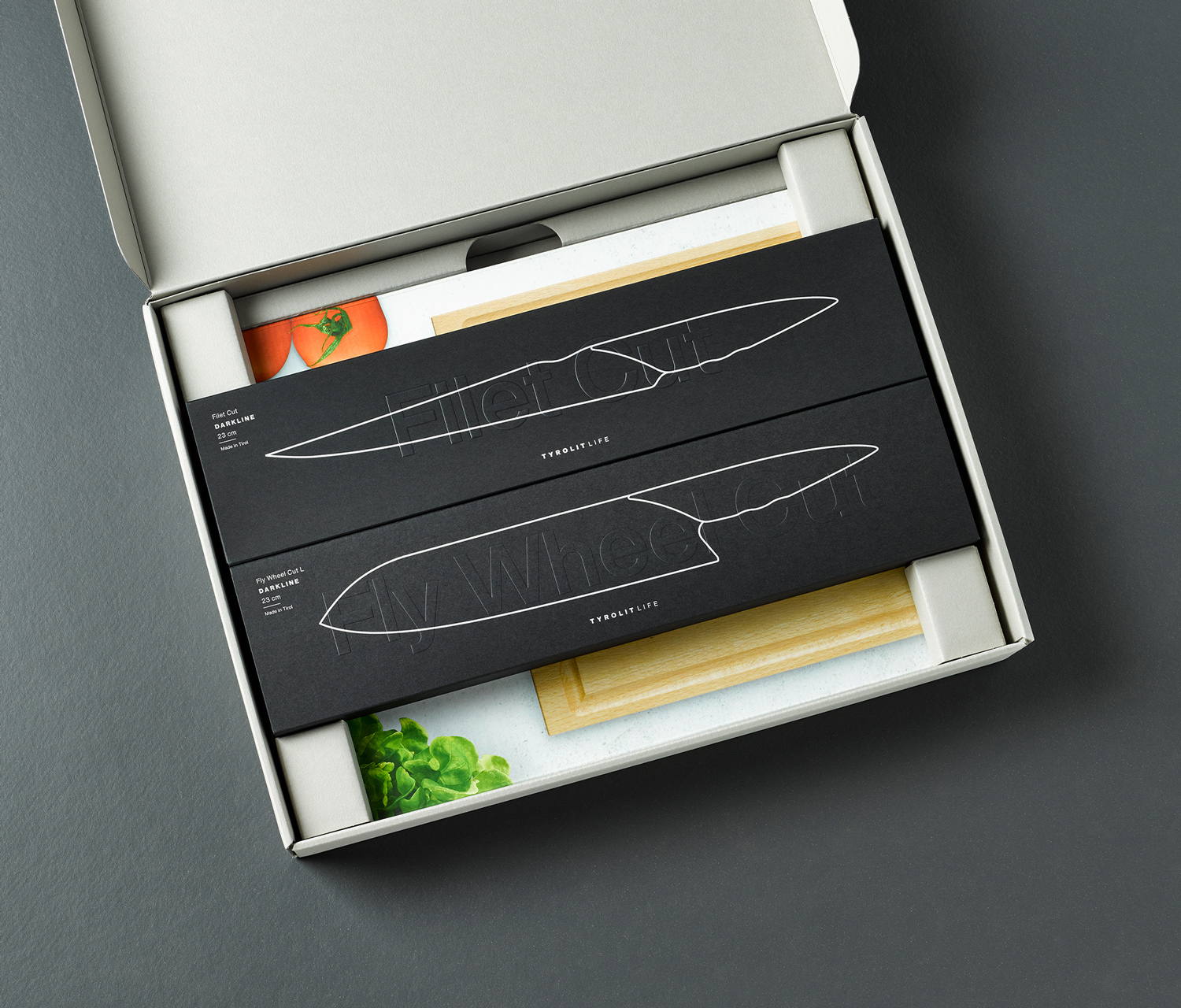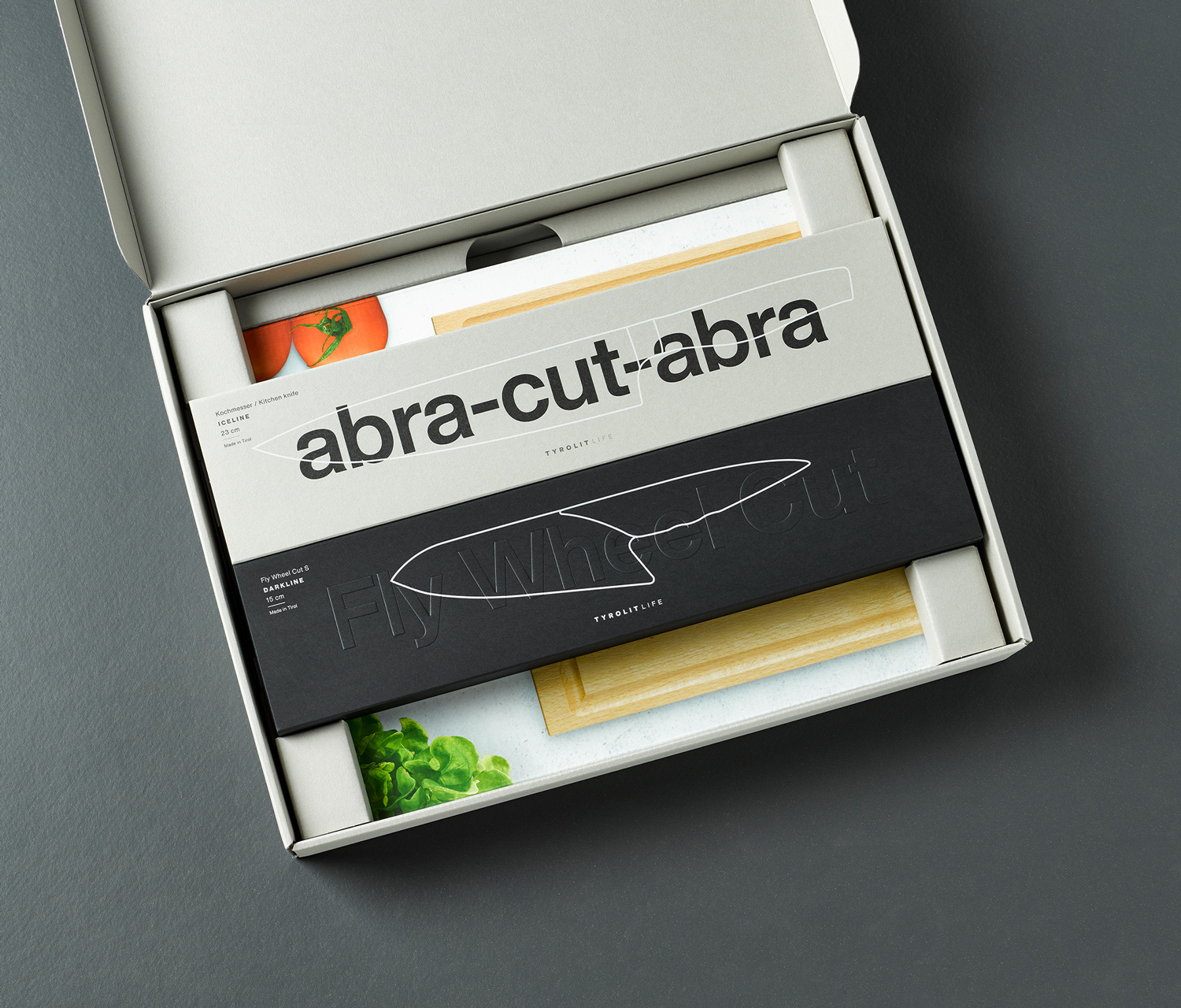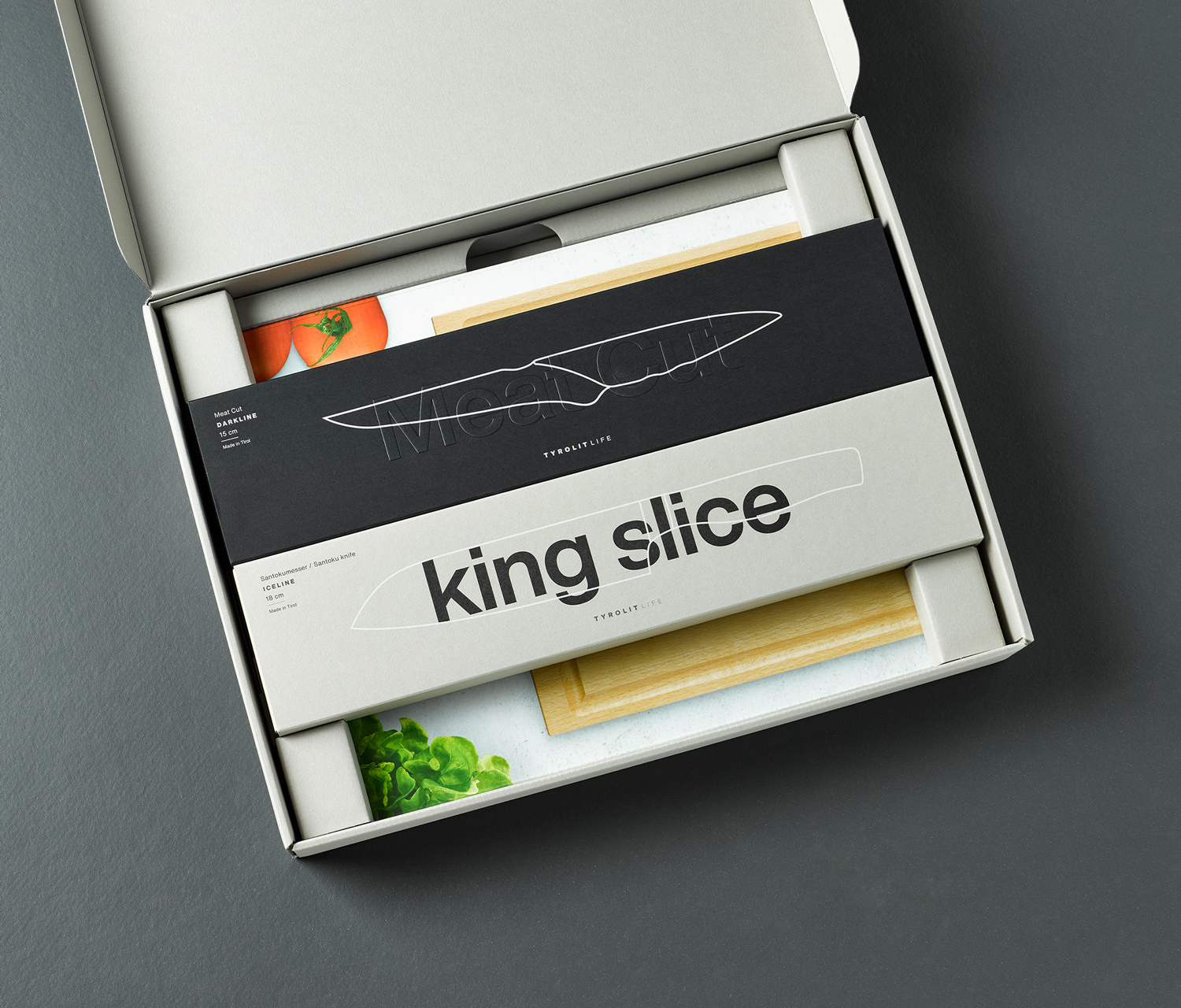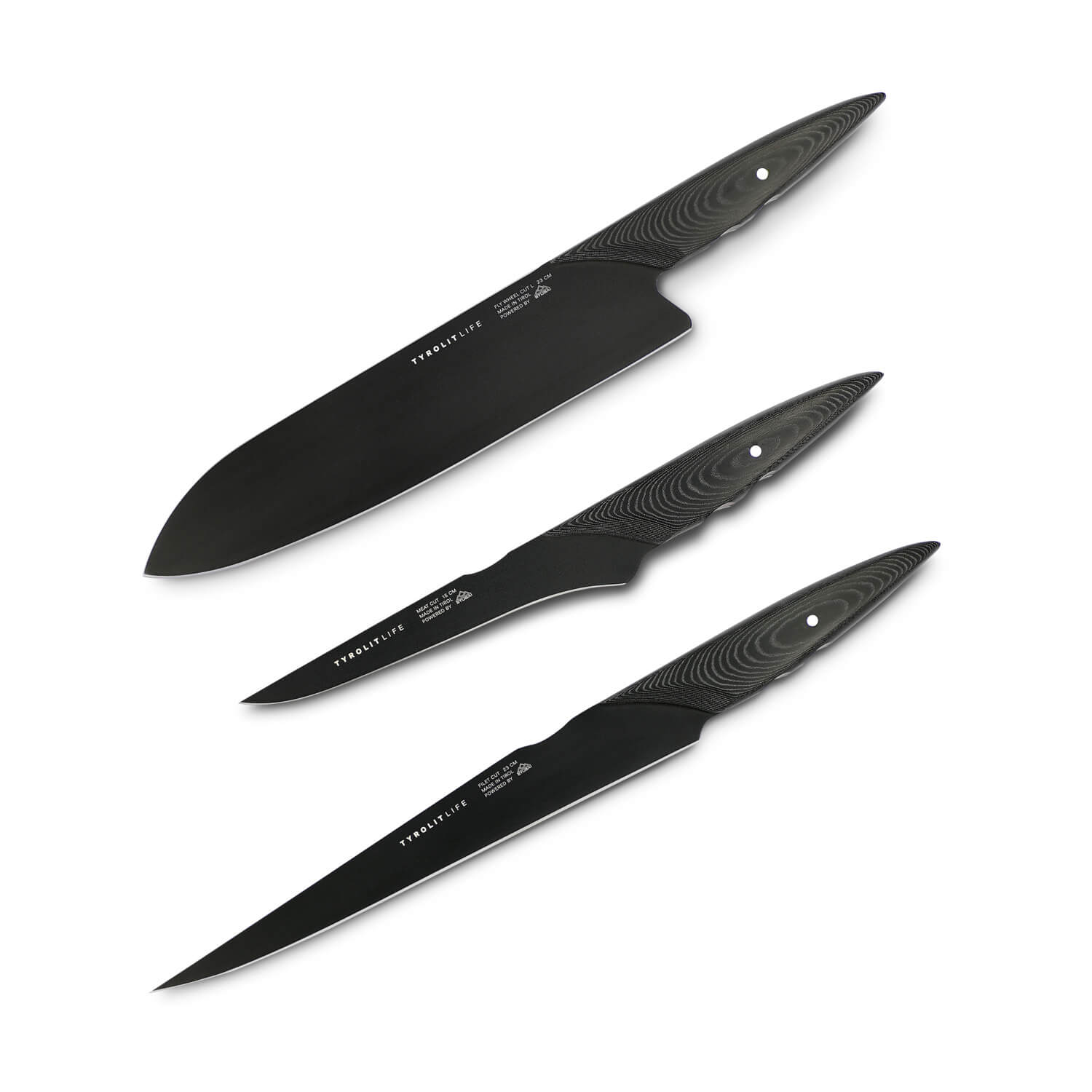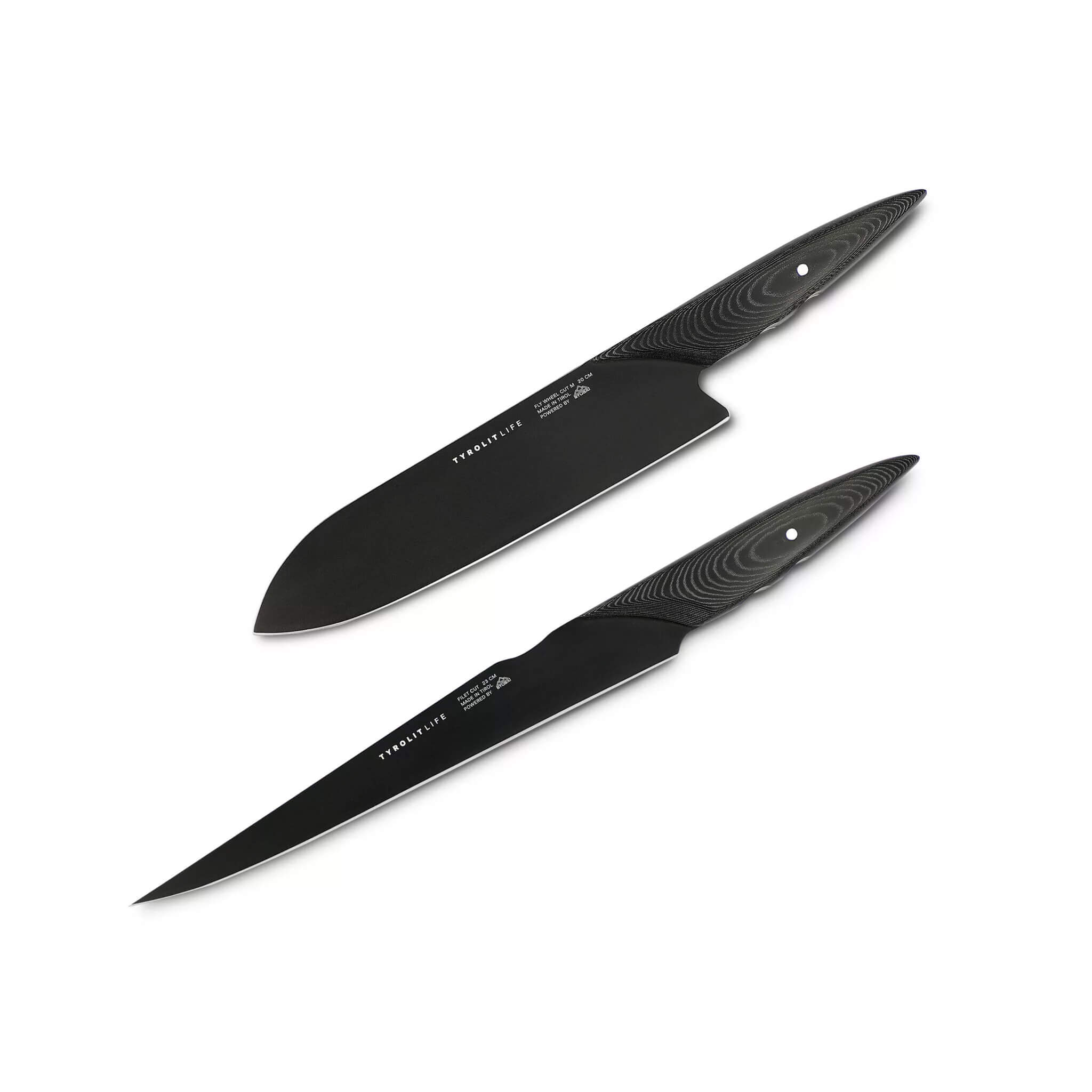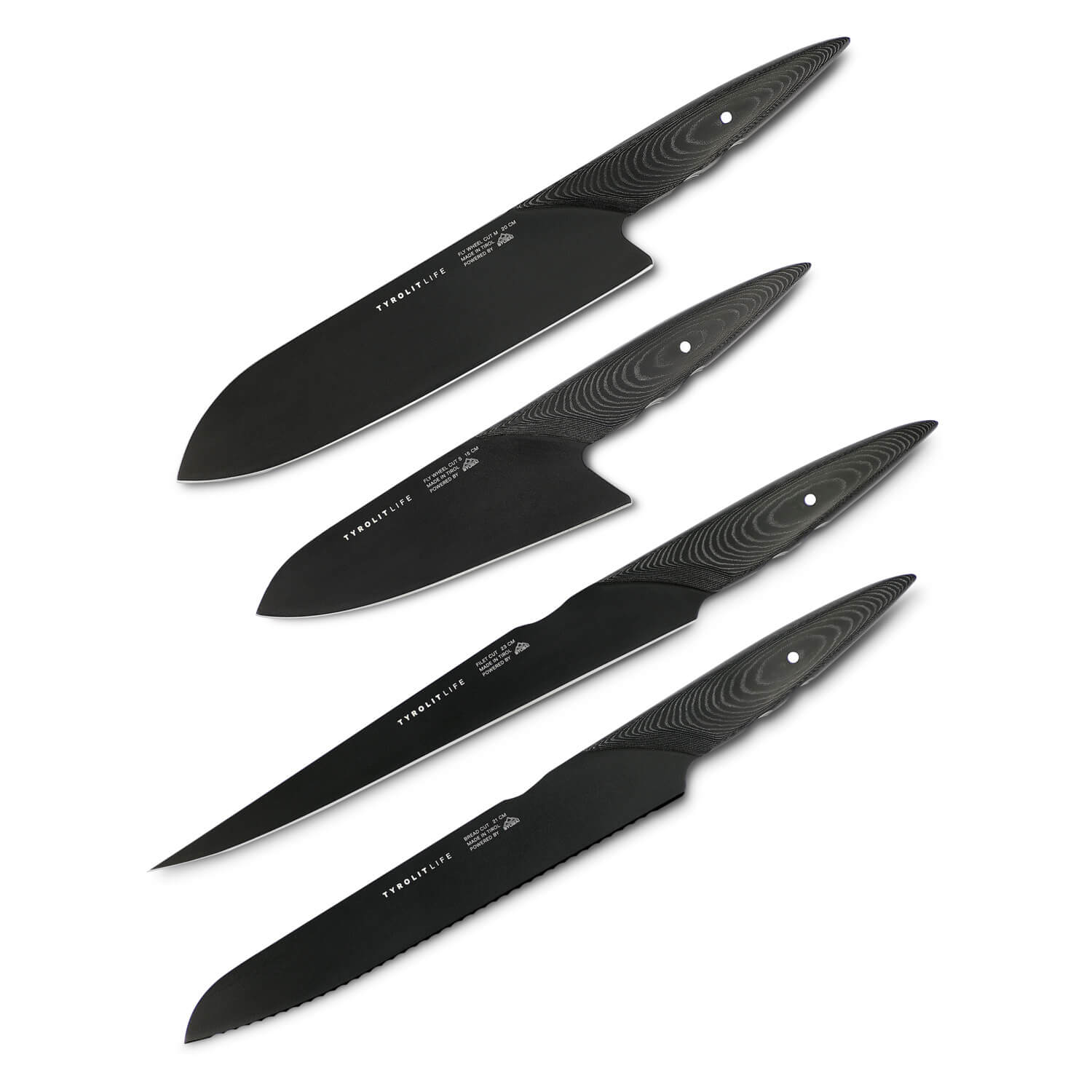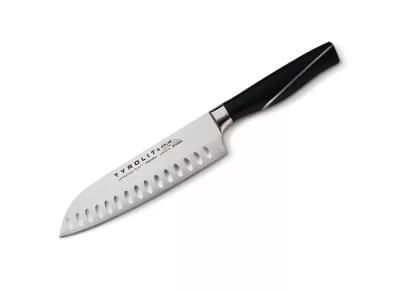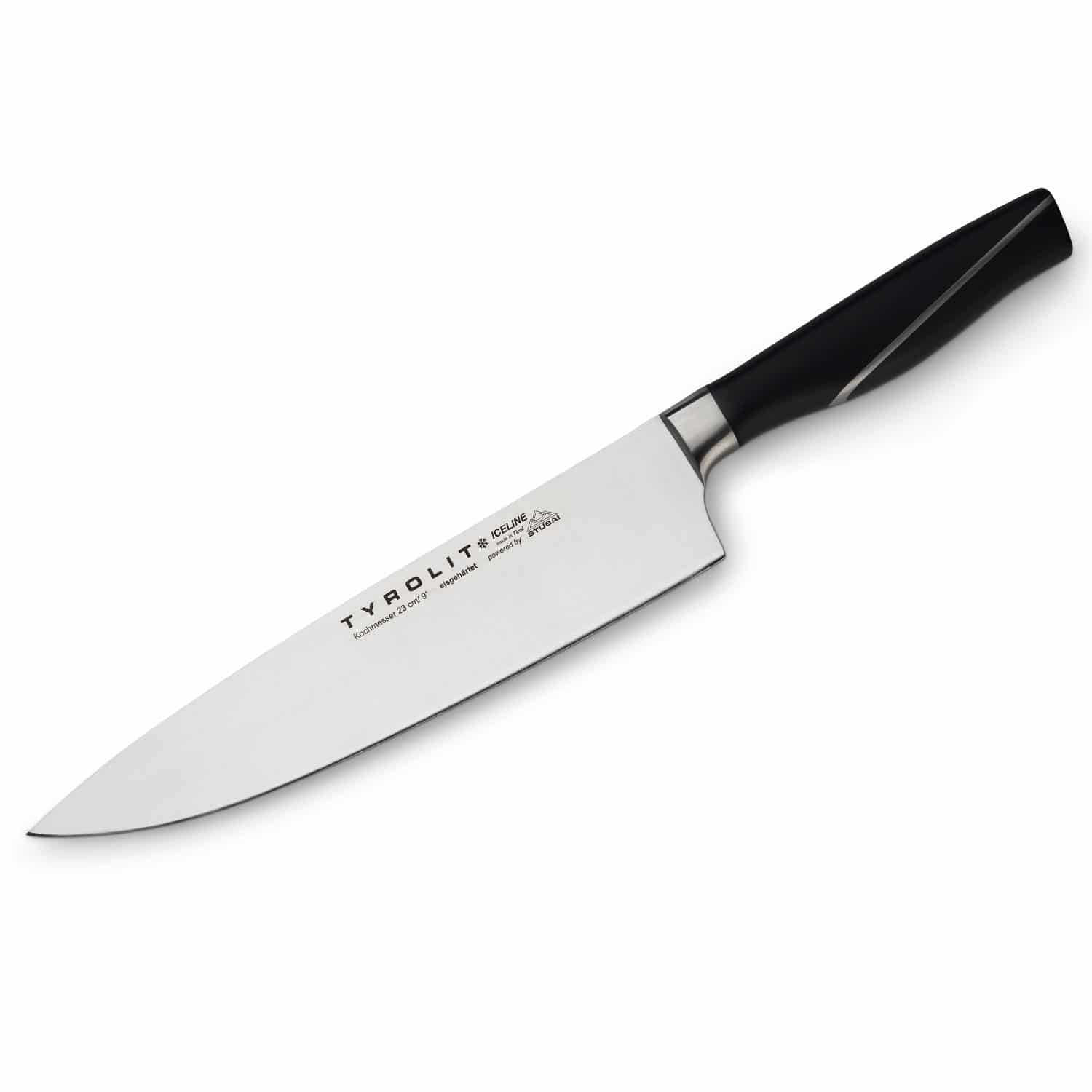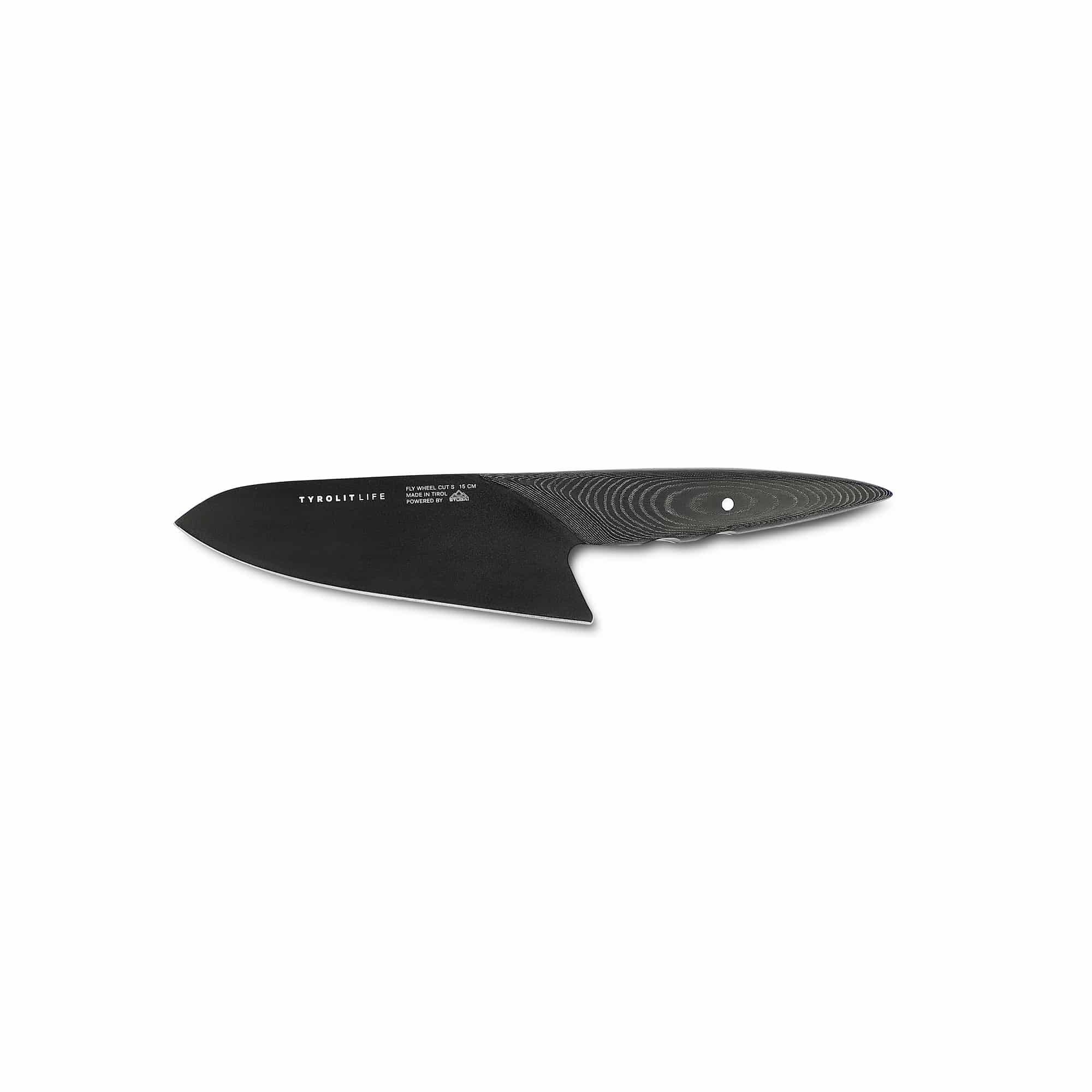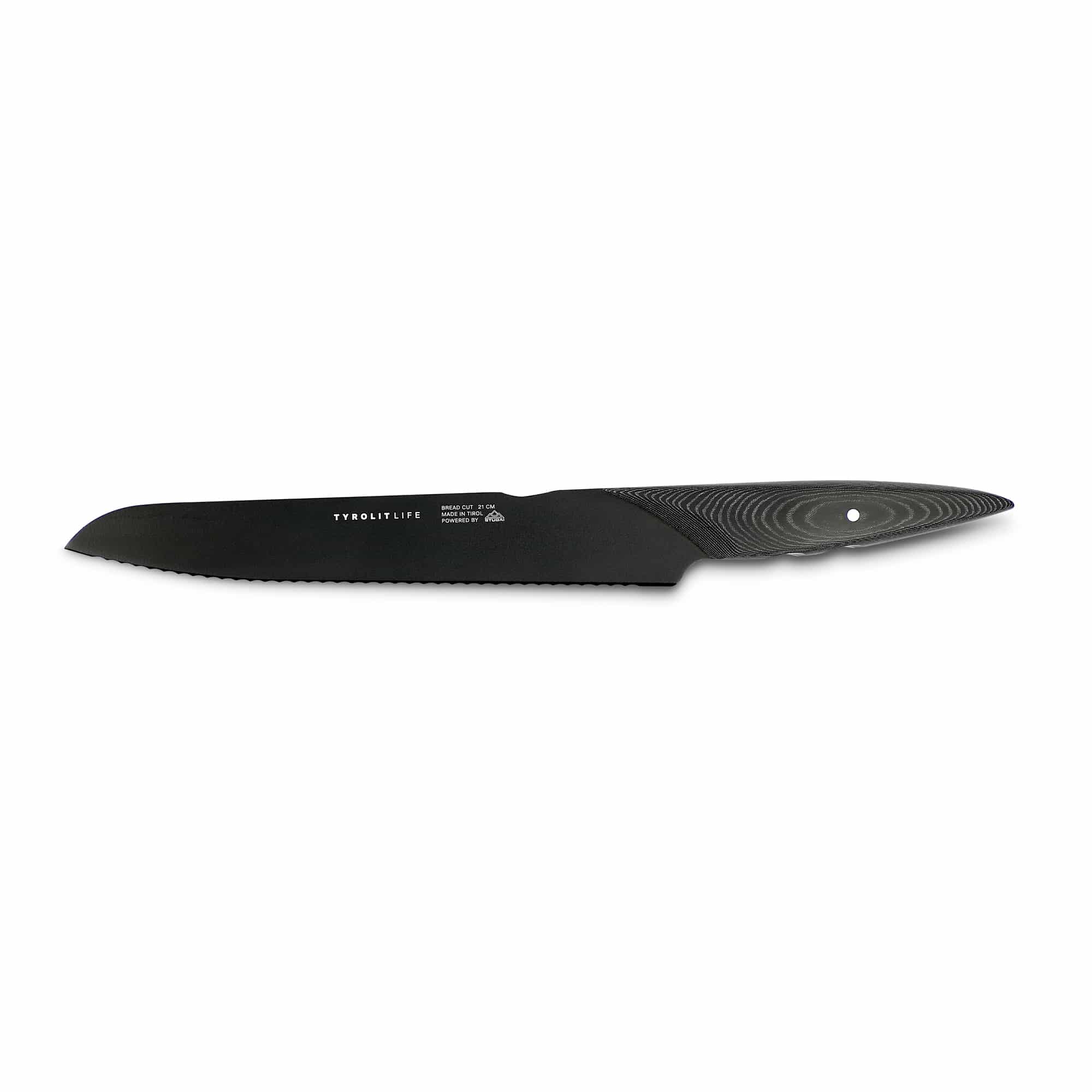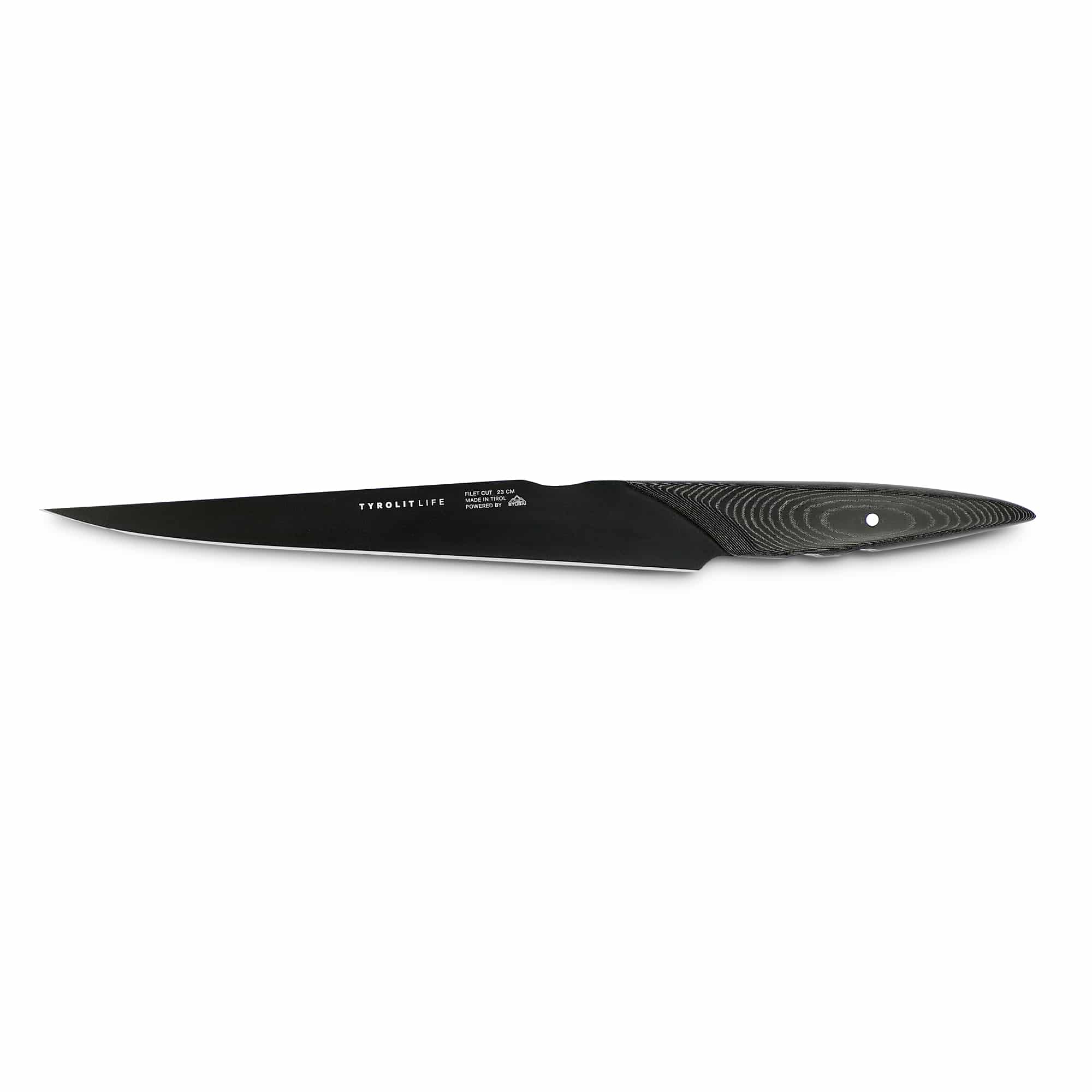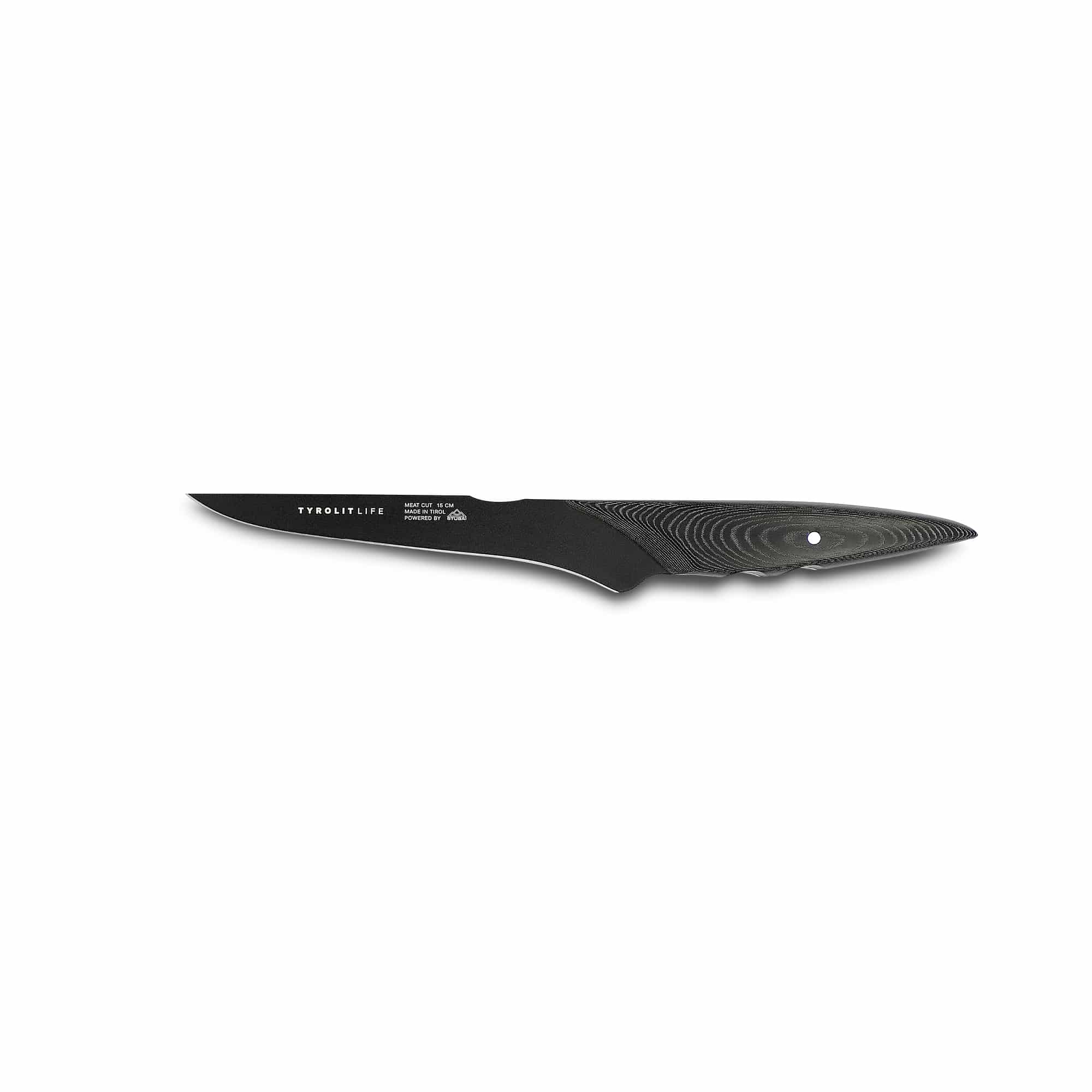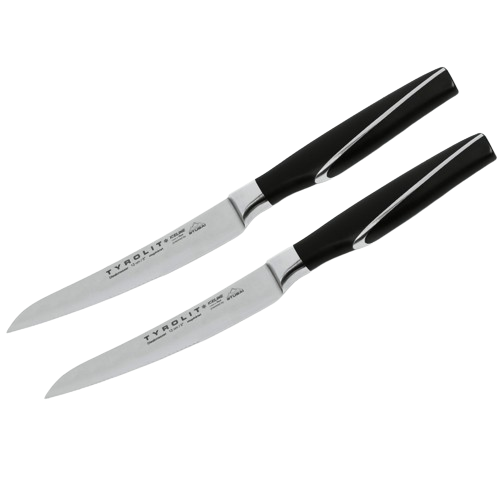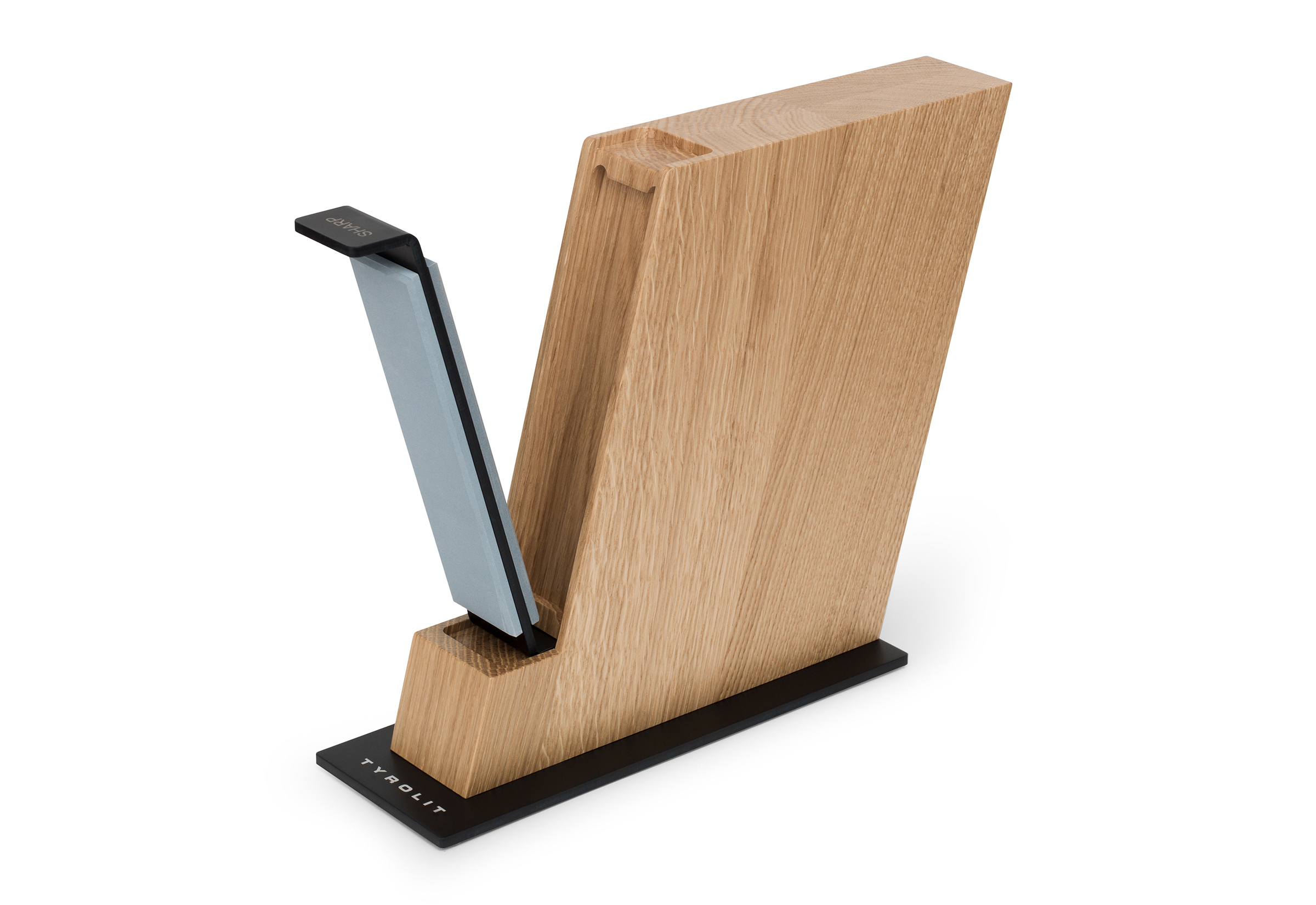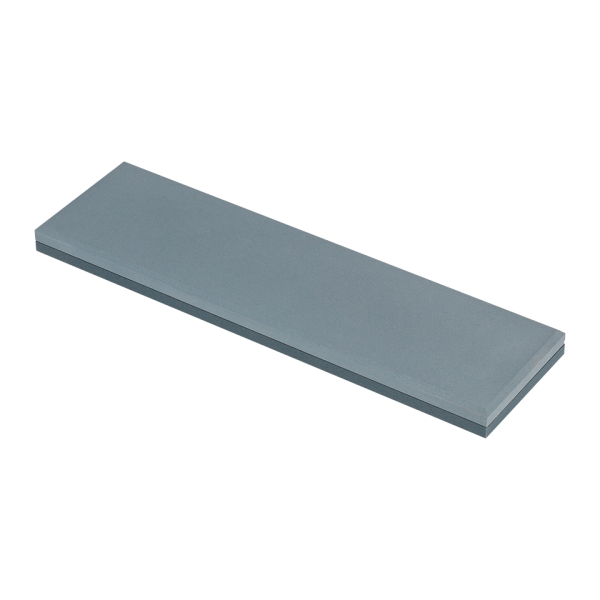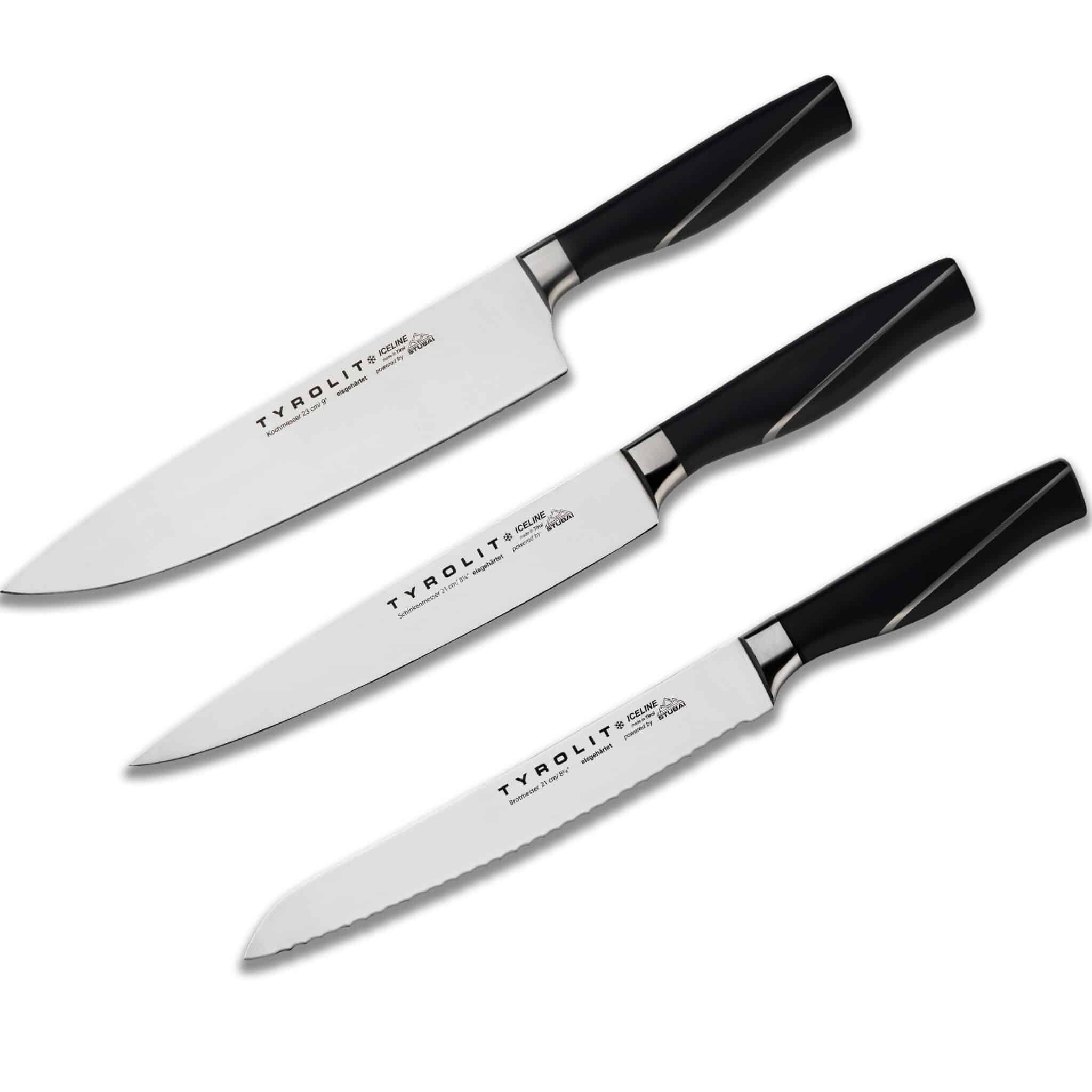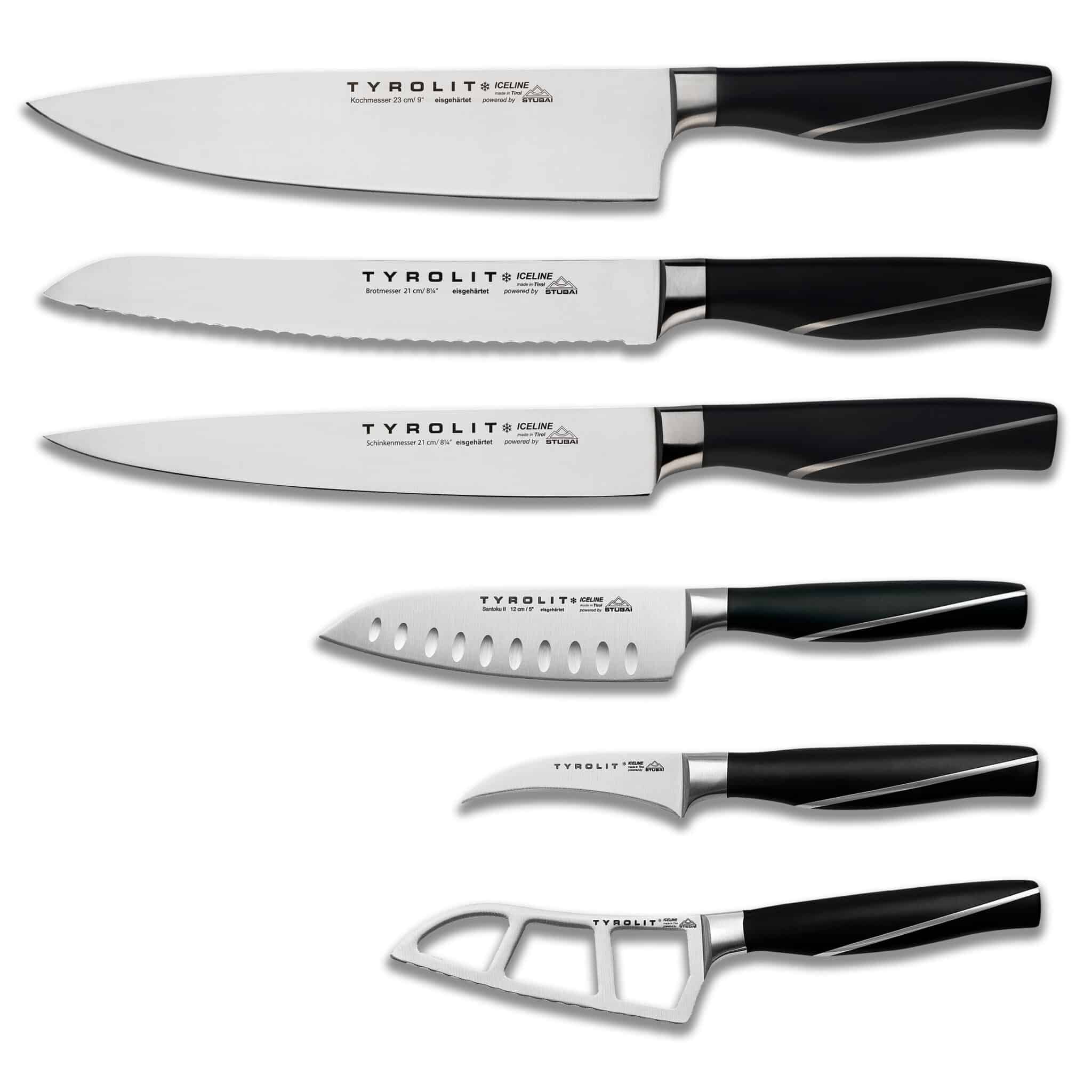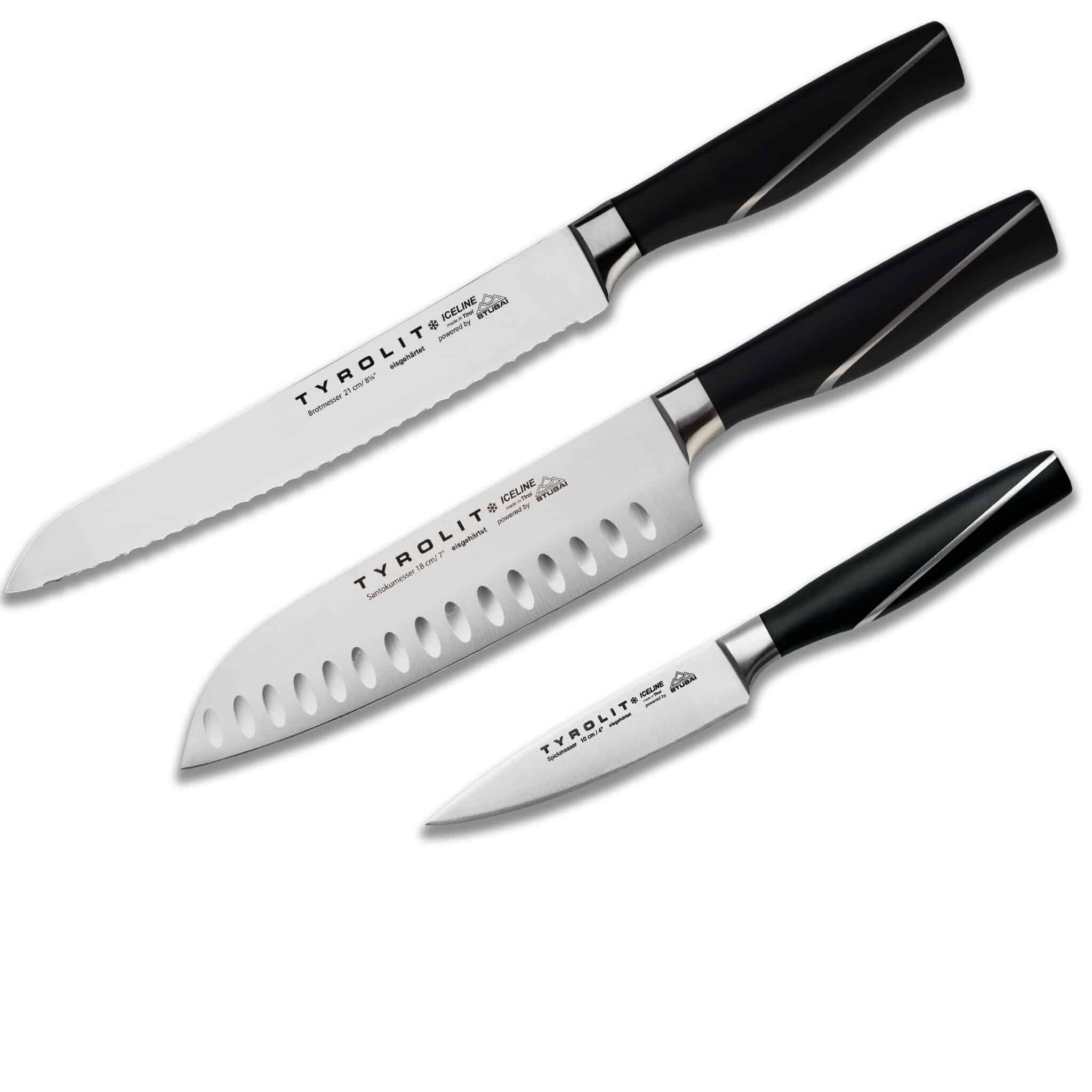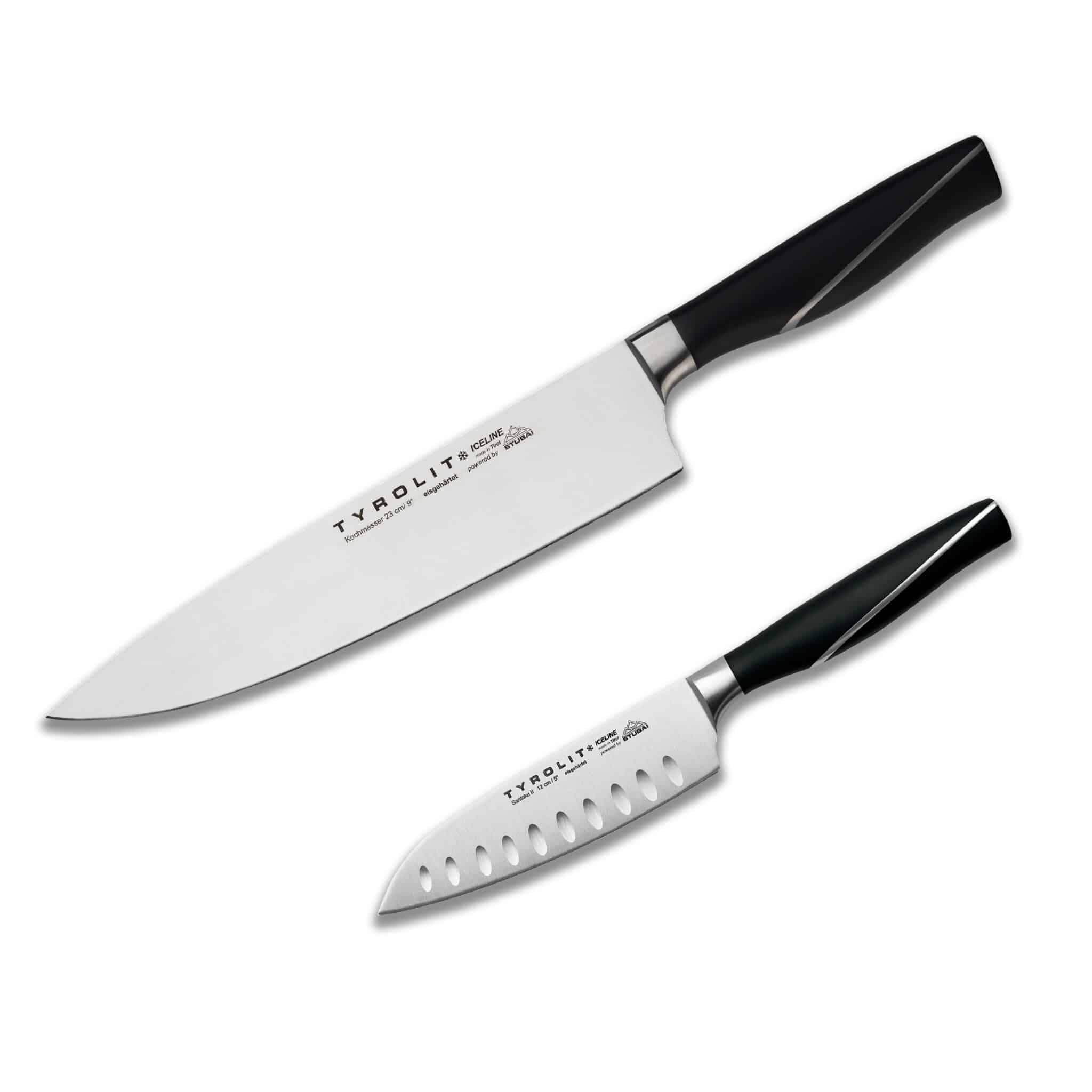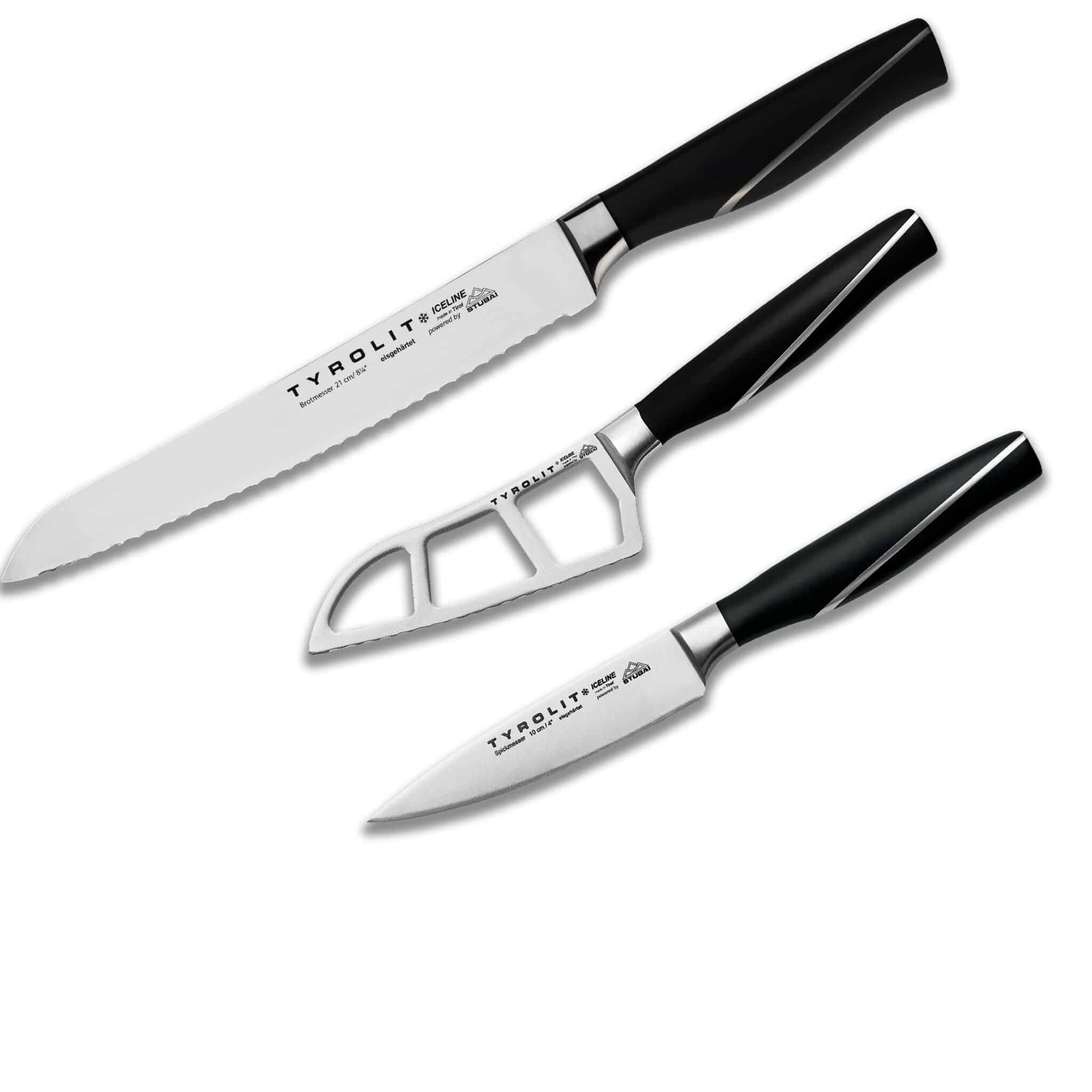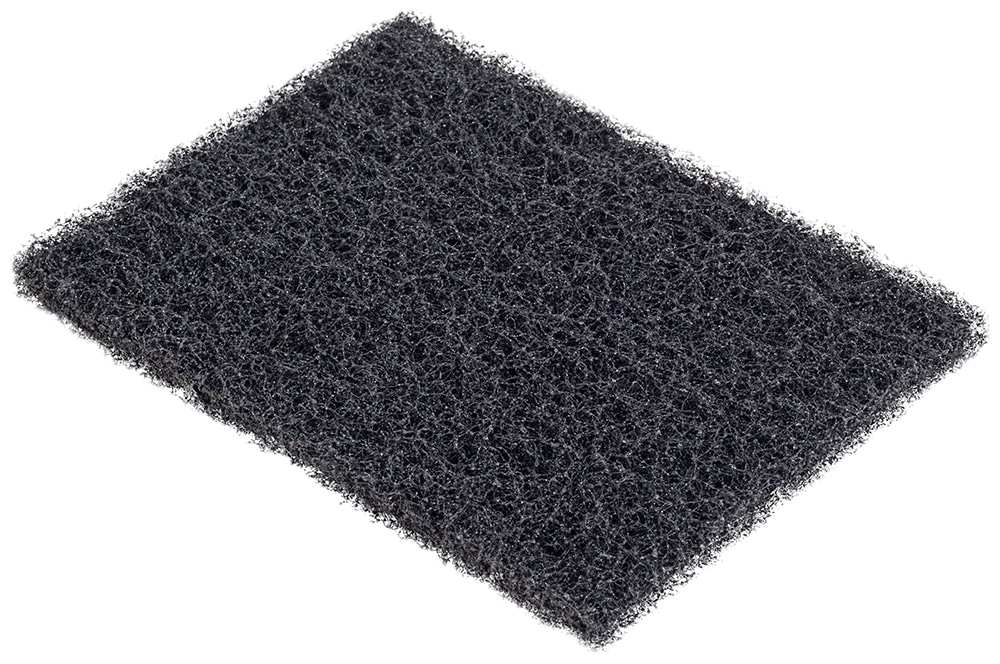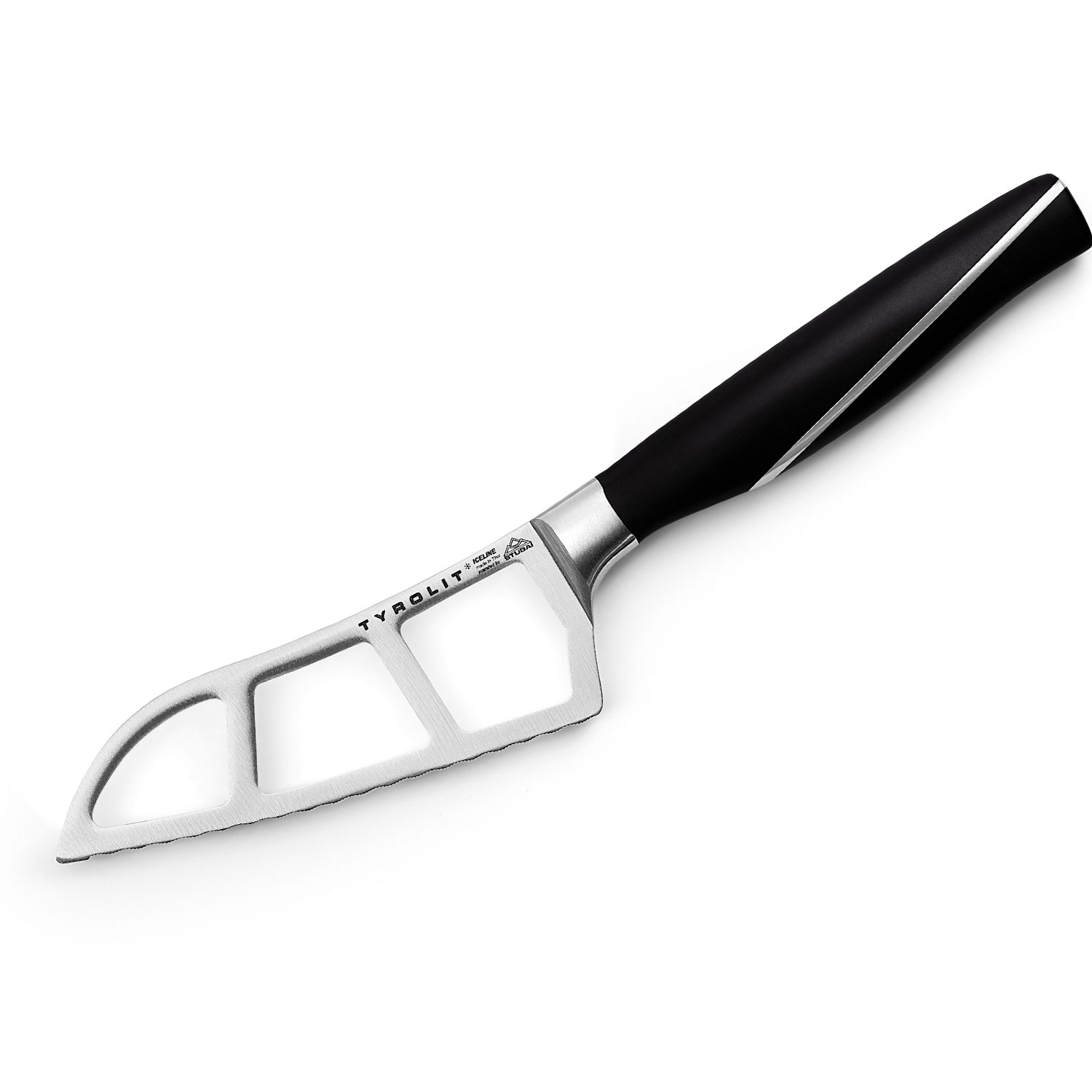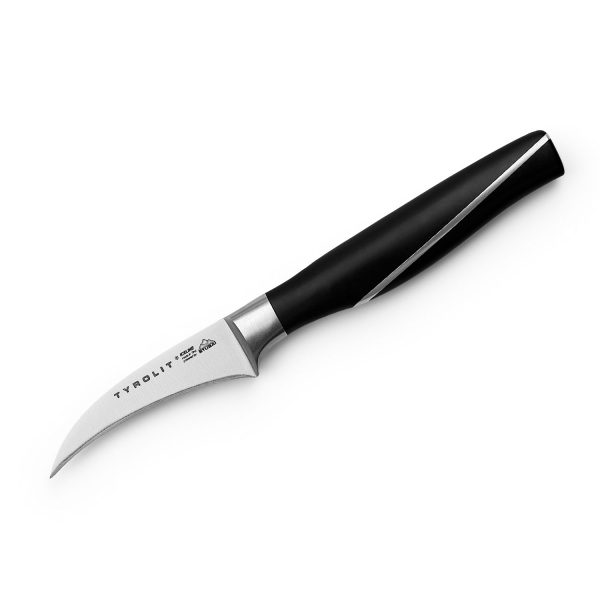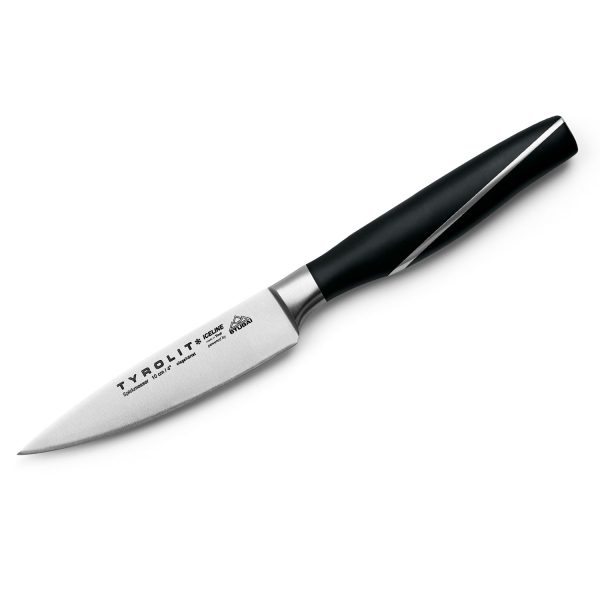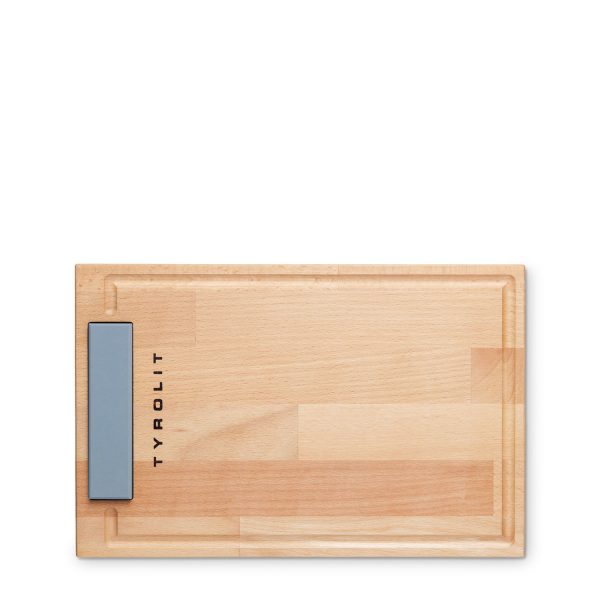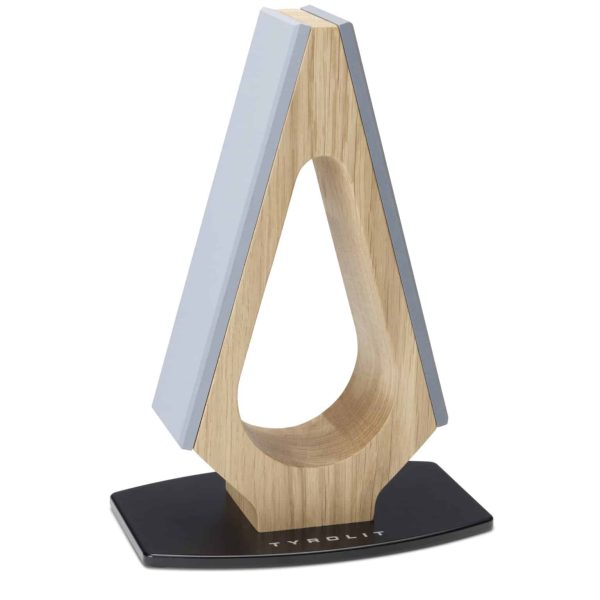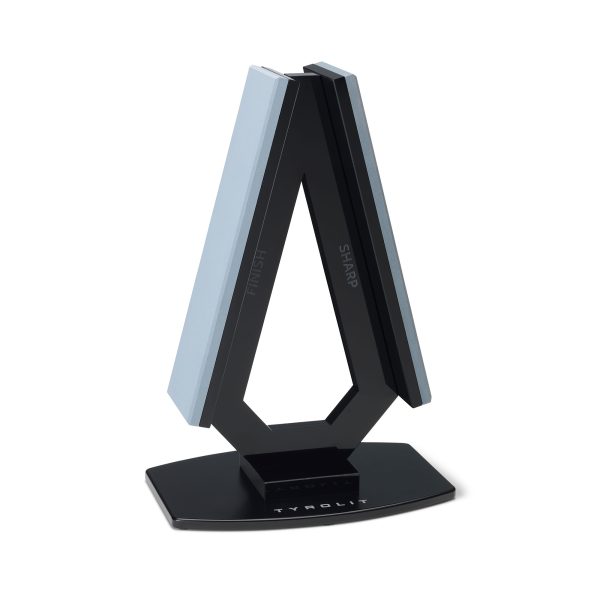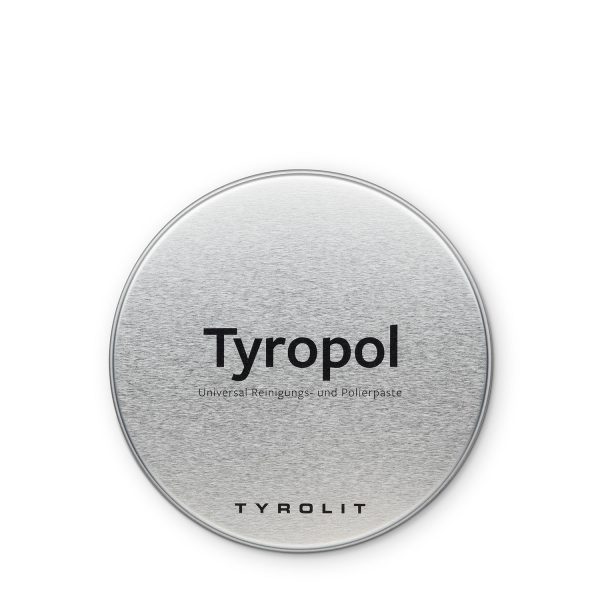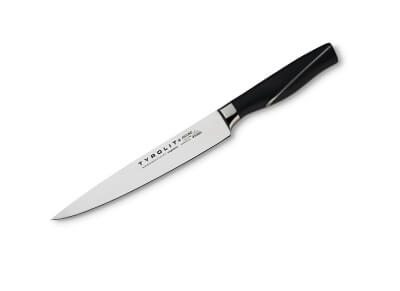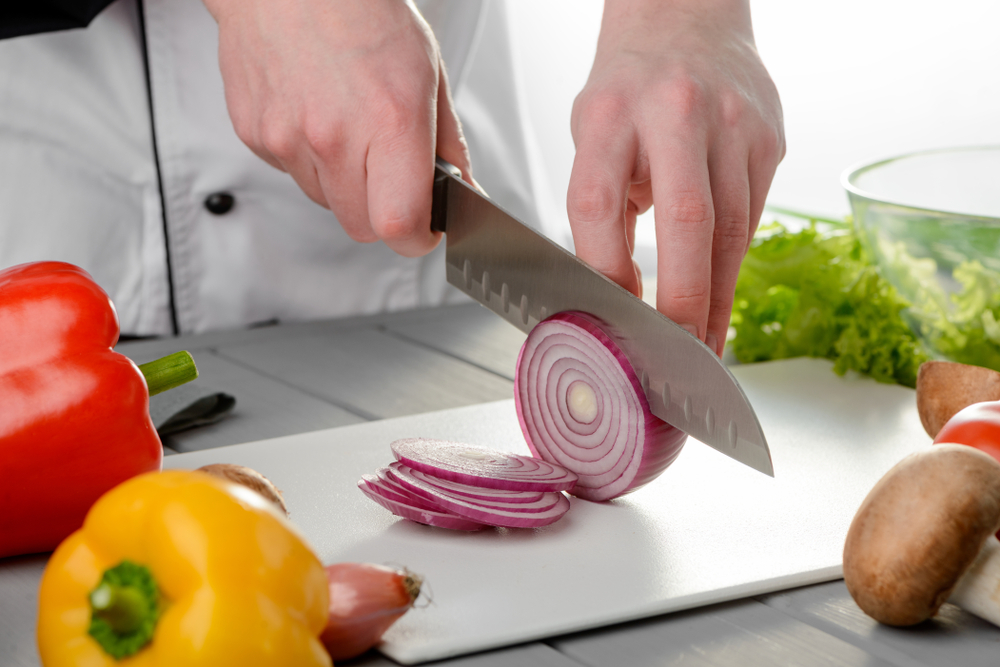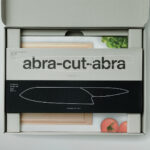Knife shapes in and outside the kitchen: What blade shapes are there?
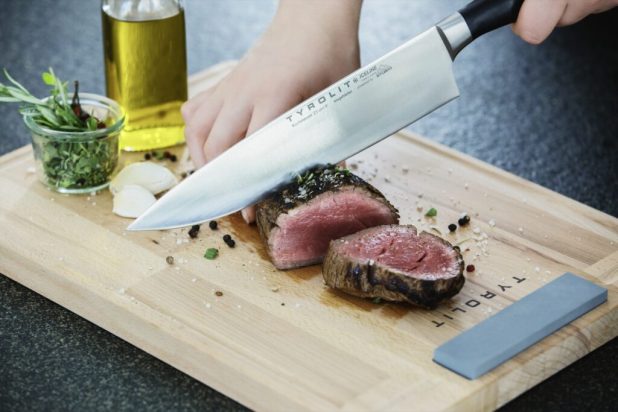
Depending on the blade shape, kitchen knives are suitable for different cutting tasks, which in turn are characteristic of a certain type of knife. From European classics like the chef’s knife and bread knife to the precision Japanese knives like the Santoku and Gyuto, the variety of knife shapes and types is impressive.
In this article, we highlight the most important blade shapes, their typical uses and the special features that distinguish European and Japanese knife types. In addition, we give you valuable tips on proper care and sharpening your kitchen knives so that you always achieve optimal results.
Blade Shapes in and Out of the Kitchen – 9 Typical Knife Shapes and Where to Find Them
The history of the knife did not begin in the kitchen. Although cutting tools have been used since the Stone Age for food processing, their uses were not limited to this. They also served as tools, weapons, and objects of worship.
The diversity of knife and blade shapes, as a crucial aspect of the knife, reflects their varied applications.
Here are 9 typical blade shapes and the areas in which they are used:
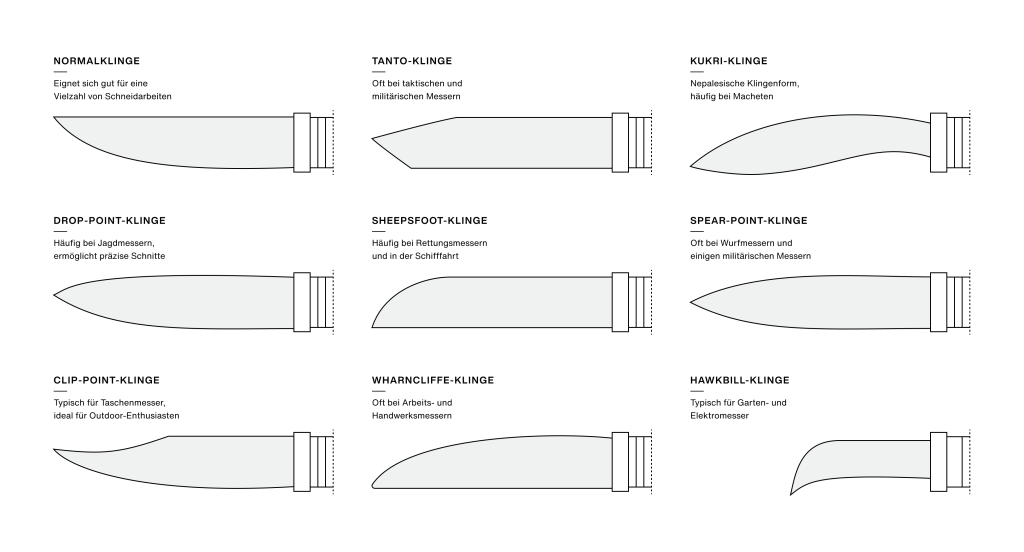
1. Normal blade
The normal blade is the most commonly used blade shape and is characterized by a slightly curved cutting edge and a tapered tip. This blade shape is versatile and is often found in chef’s knives, pocket knives and folding knives. It is well suited for a variety of cutting jobs, from fine to coarse cuts.
2. Drop Point Blade
This blade shape is characterized by a slightly sloping tip, which allows for strength and precision. Drop-point blades are commonly found on hunting knives. This form facilitates precise cuts and is ideally suited for skinning game and other outdoor activities.
3. Clip Point Blade
The clip-point blade has a pointed, partially cut-off tip, and an upwardly bent blade back. It is also called a pike blade and is typical of pocket knives and folding knives. It is ideal for fine cutting work, which makes it popular with many outdoor enthusiasts and craftsmen, but also with hunters.
4. Tanto Blade
The Tanto blade has a distinctive, straight cutting edge and a sharp tip that is known for its penetrating power. This blade shape is originally from Japan and is often found on tactical and military knives.
5. Sheepsfoot Blade
The Sheepsfoot blade is characterized by a straight cutting edge and a rounded tip. This shape is ideal for precise cuts where the risk of accidental puncture is minimised. It is often used in rescue knives and in shipping, as it is well suited for cutting ropes and safety belts.
6. Wharncliffe Blade
The Wharncliffe blade has a straight cutting edge and a gently sloping backline that results in a pointed but sturdy tip. This blade shape is often found in work and craft knives. It provides excellent control and stability for fine and precise work.
7. Kukri Blade
The Kukri blade is a traditional Nepalese blade shape with a characteristic curved cutting edge. This blade shape is often used on large knives and machetes. The curved shape allows for powerful cuts and is great for chopping and cutting wood and dense scrub.
8. Spear Point Blade
The Spear Point blade features a symmetrical, tapered shape designed for precise stabs and versatile cutting tasks. This blade shape is frequently utilized in throwing knives and certain military knives, offering an optimal balance between cutting and stabbing capabilities.
9. Hawkbill Blade
The Hawkbill blade is sickle-shaped and has an inwardly curved cutting edge. This blade shape is often found in garden and electric knives, as it is ideal for cutting cables and ropes. The curved blade holds the cuttings securely and enables precise cuts.
European and Japanese knife types for the kitchen – the features
The development of various knife types is not solely based on the different applications for which they are intended. Knives are part of a long tradition of cutting implements, which is also influenced by culture. Consequently, distinctions arise – such as those between European and Japanese kitchen knives.
European kitchen knives are renowned for their versatility and robustness. The typical European chef’s knife (often used as a utility knife, making it a true all-rounder) features a wide blade and a sturdy spine, offering stability and control during cutting. These knives tend to be somewhat heavier and boast a longer blade length, making them ideal for slicing, dicing, and chopping a wide array of ingredients.
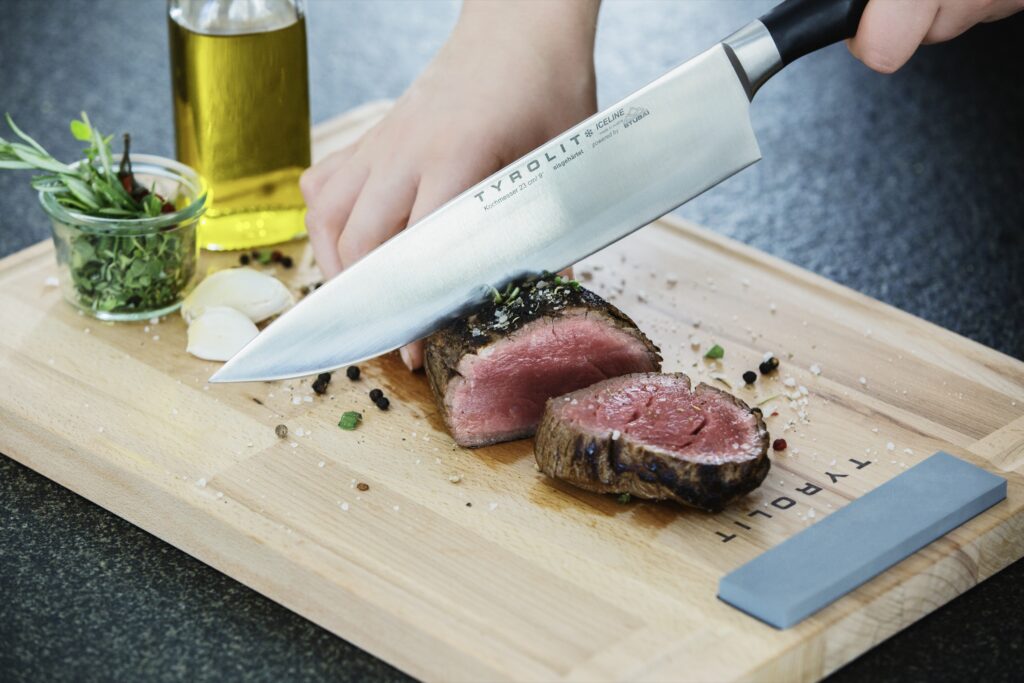
The serrated edge on the bread or tomato knife enables effortless slicing through crispy crusts, whereas the straight blade of the cleaver withstands heavy loads when chopping meat and hard foods.
Japanese kitchen knives are characterized by their exceptional sharpness and precision. The blade shape is often narrower and longer, allowing for finer control and precise cuts. Typical Japanese knife types such as the Santoku knife, Gyuto, Nakiri and Deba have established themselves in Japanese cuisine to efficiently handle various cutting tasks.
A striking difference between European and Japanese knives lies in the type of sharpening and the blade shape. Japanese knives often have a one-sided sharpening (kataba), which provides an extremely sharp cutting edge, ideal for precise cutting work. European knives, on the other hand, usually have a double-sided sharpening (symmetrical sharpening), which offers more stability and a longer durability of sharpness.
The correct sharpening angle also varies: for most European knives, an angle of around 15 degrees is deemed optimal, affording them longevity and stability. For instance, this angle is pre-set in Tyrolit Life’s knife sharpeners to simplify the sharpening process.
Japanese knives, on the other hand, are generally sharpened to a finer edge, making the blade less durable yet sharper. However, there are hybrid forms; for instance, the Santoku knife has become a popular all-purpose knife worldwide. Consequently, European variants have emerged—such as the Santoku from Tyrolit Life—which can be maintained like other European knives.
European trade fair types – the most important types
European knife types are known for their versatility and robustness. They are essential for performing a variety of cutting tasks in the kitchen. Here are the main types of European knives and their respective areas of application:
Chef’s knife
The chef’s knife is a universal tool in the kitchen. It features a wide blade that usually measures between 20 and 30 cm in length. This blade shape facilitates the mincing, slicing, and chopping of various foods such as meat, fish, and vegetables. It serves as the all-purpose knife in European cuisine.
Filleting knife
The filleting knife has a long, flexible blade that is ideal for filleting fish and meat. It also facilitates the removal of bones, making it indispensable for preparing fish dishes.
Bread knife
The bread knife features a long blade with a serrated edge, perfect for slicing through bread and baked goods. The serrated design allows it to cut through crispy crusts without compressing the bread’s soft interior.
Steak knives are specially designed for cutting steaks and other meats. They have a sharp, serrated blade that effortlessly cuts through meat without tearing the fibers. These knives are often part of a cutlery set.
Cheese knife
Cheese knives have a special blade shape that allows you to cut different types of cheese without the cheese sticking to the blade. There are different types of cheese knives designed for hard, soft and crumbly cheeses.
Peeling Knife
The peeling knife is a small knife with a short, curved blade that is ideal for peeling fruit and vegetables. It scores with easy handling, making it an indispensable tool for ingredient preparation.
Larding Knife
The larding knife, also known as a utility knife, has a short, thin blade that is ideal for larding meat with bacon or herbs. This type of knife is also used for the “Brettljause” – perfect for on-the-go as well.
Fruit Knife
Fruit knives are small, sharp knives specifically designed for cutting and peeling fruit. Their short blades allow for precise work despite the exertion of force, which is particularly important for small fruits.
Ham Knife
The ham knife, akin to the boning or carving knife, features a long, thin blade that is ideal for slicing thin pieces of ham and other large meat cuts. It allows for precise and uniform cuts that do not tear the meat.
Japanese Kitchen Knives – Popular Knife Types
Japanese kitchen knives are characterized in particular by their sharp blade. They are popular cutting tools not only in Japan, but worldwide.
Here are some of the most popular Japanese knife variants and their typical areas of application:
Santoku Knife
The Santoku knife, whose name means "three virtues," is a versatile Japanese knife that excels at slicing meat, fish, and vegetables. The blade typically ranges from 12 to 18 cm in length and features a slightly curved shape that facilitates a rocking motion during cutting. The Santoku knife is a true all-rounder in Japanese cuisine and is often seen as the counterpart to the European chef's knife, ideal for chopping and portioning.
Nakiri Knife
The Nakiri knife is a traditional Japanese vegetable knife with a rectangular blade. It is specially designed for the fine chopping and slicing of vegetables. The straight blade makes chopping on the cutting board easier.
The Nakiri knife is ideal for chopping large quantities of vegetables and is an indispensable tool for vegetarians and vegans.
Gyuto Knife
The Gyuto knife is the Japanese equivalent of the European chef's knife and is suitable for a variety of cutting tasks. With a blade length of 20 to 24 cm and a slightly curved shape, the Gyuto is perfect for slicing, dicing, and chopping meat, fish, and vegetables.
Yanagiba Knife
The Yanagiba knife, also known as a sashimi knife, has a long, thin blade that is ideal for preparing raw fish. This fish knife is traditionally used for filleting and slicing sashimi and sushi.
The single-sided sharpened blade enables extremely precise cuts that do not tear the fish and leave a smooth surface.
Deba Knife
The Deba knife is a heavy, sturdy knife with a thick blade primarily used for cutting and filleting fish. The blade is strong enough to cut through bones and fish bones, yet still enables precise cuts.
The Deba knife is often used in fish processing and is an essential tool for those who regularly prepare fish.
What cutting tasks is the Santoku knife suitable for?
The cutting capabilities of the Santoku knife are wide-ranging, making it a true all-rounder in the kitchen. We will show you for which cutting tasks the Santoku knives are particularly well-suited.
Maintain and sharpen kitchen knives properly – with Tyrolit Life
No matter the blade shape, whether European or Japanese, knives require proper maintenance to preserve their cutting abilities. This involves careful handling during use, washing, and storage, as well as regular sharpening.
To ensure that you always have sharp knives at your disposal in your kitchen, Tyrolit has developed the appropriate sharpening accessories alongside their high-quality kitchen knives.
The Tyrolit knife sharpeners feature a preset sharpening angle of 15 degrees, specifically designed to ease the sharpening of European knives. With two distinct grit levels, 400 and 800, they facilitate both the coarse and fine honing of your cutting instruments.
The wooden cutting board and magnetic knife block from the Tyrolean sharpening expert are also dedicated to enduring sharpness. They too come equipped with a whetstone including a preset sharpening angle, ensuring your knives are not just always ready for use but also that sharpening is seamlessly integrated into everyday use – for even better cutting outcomes.
FAQs
What kind of knives are there?
What knife is used for what?
What knife shape do you use for vegetables?
What do you use a Nakiri knife for?

